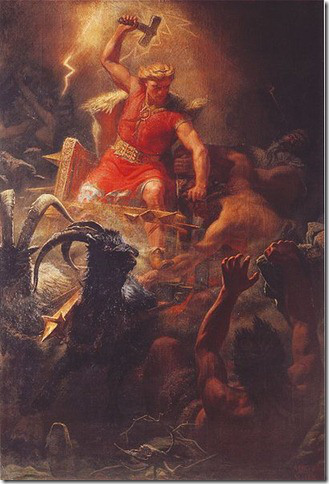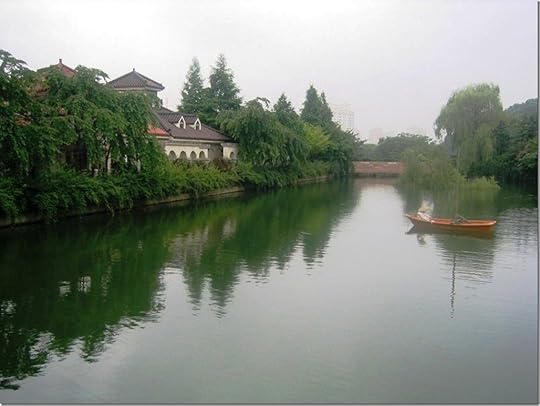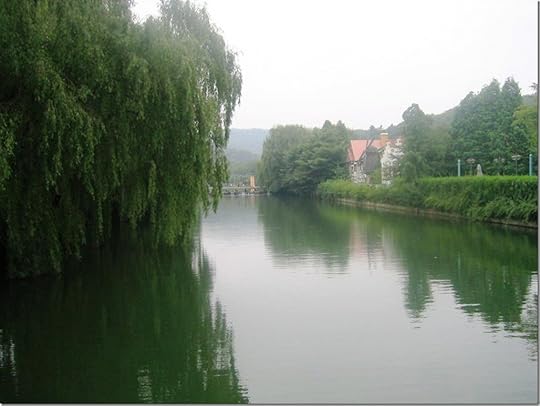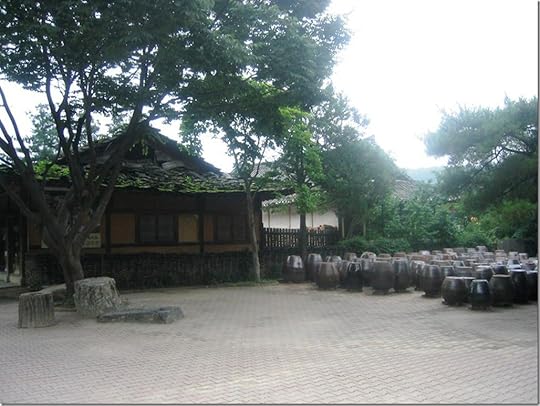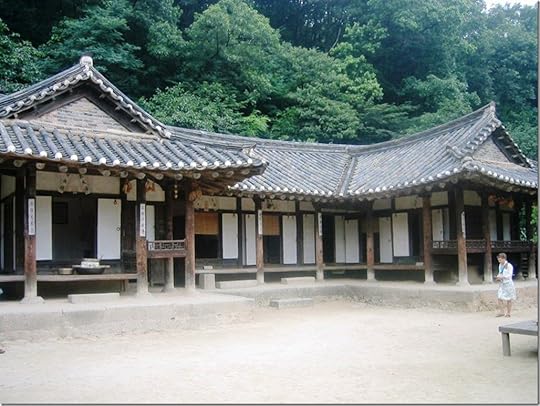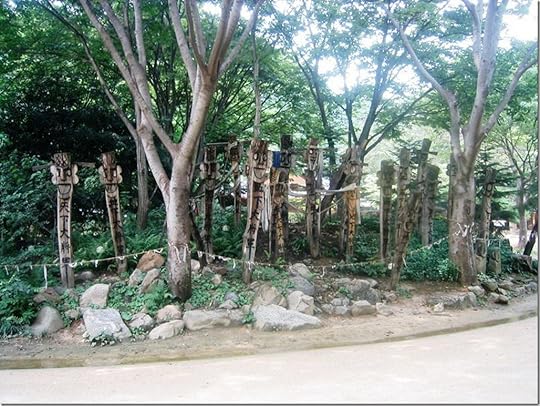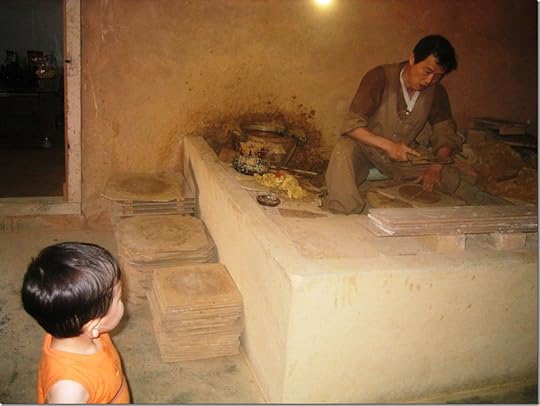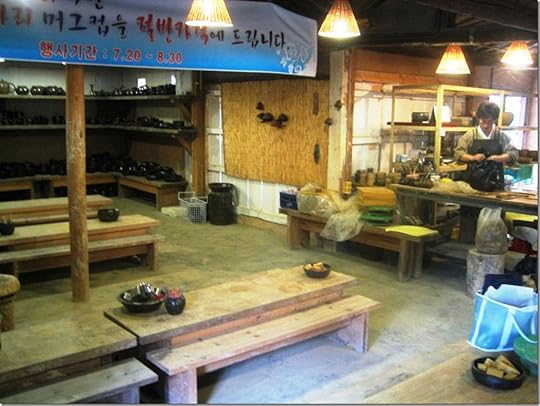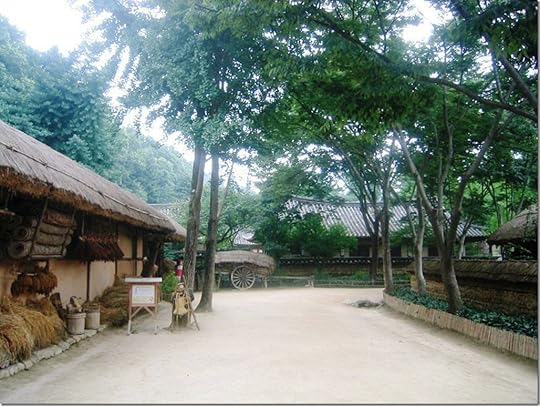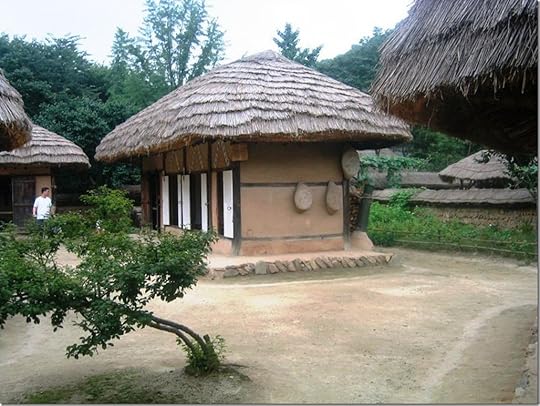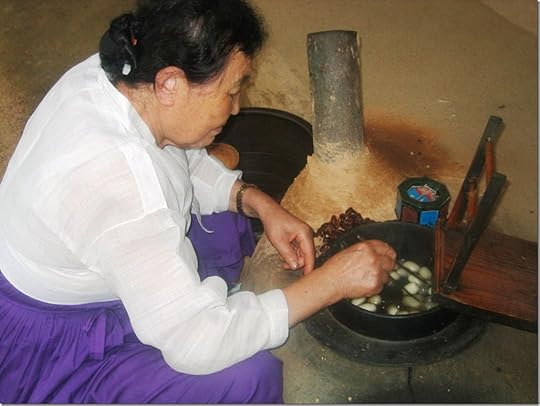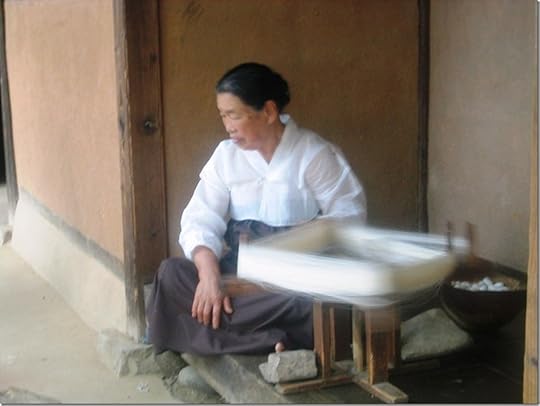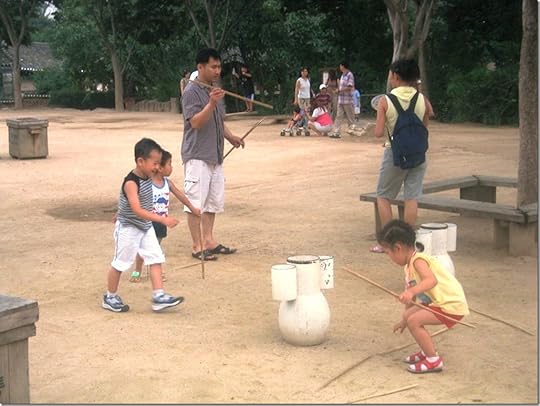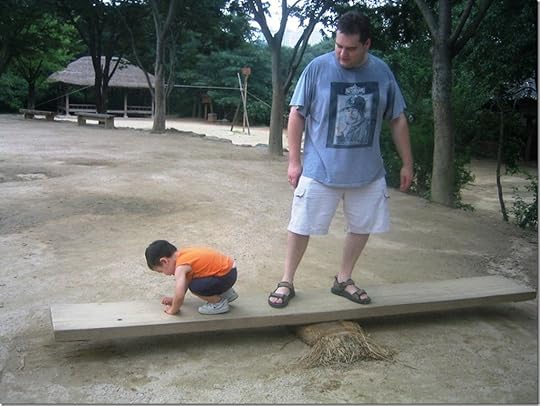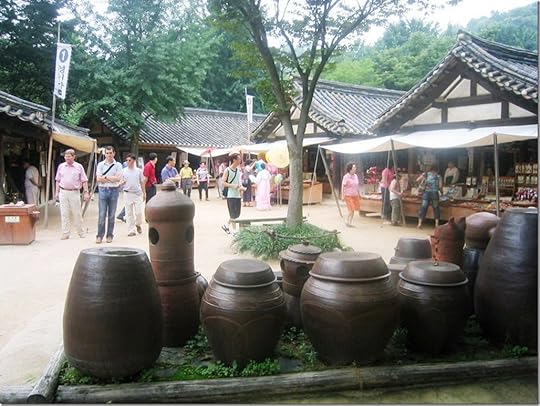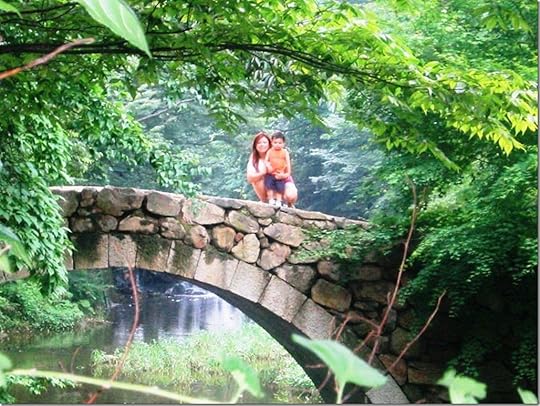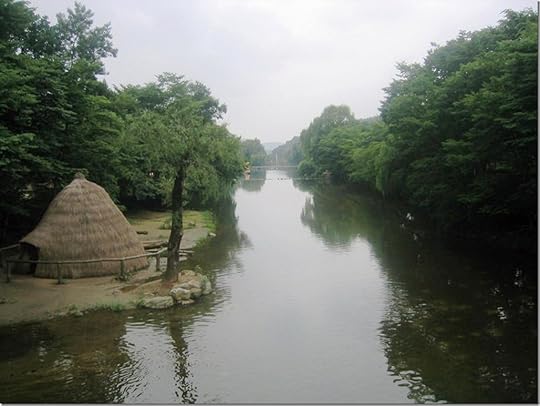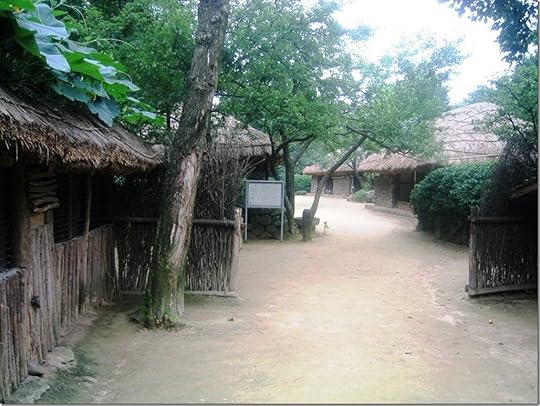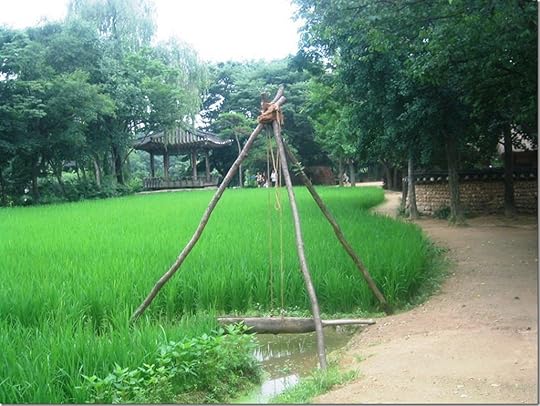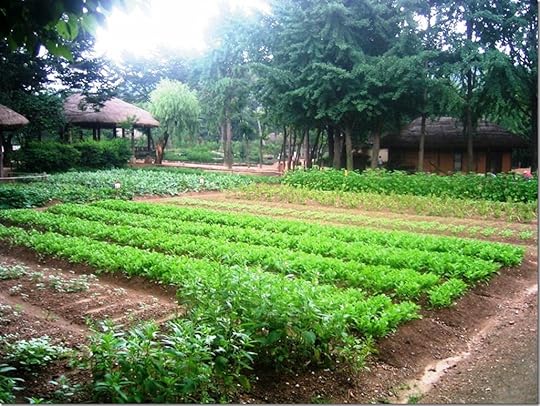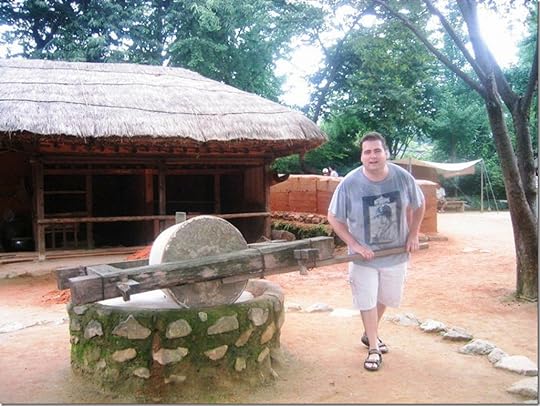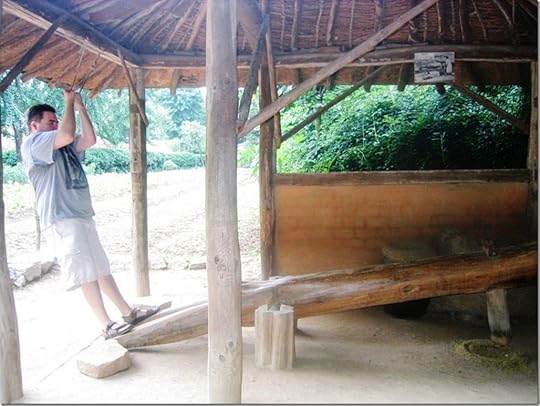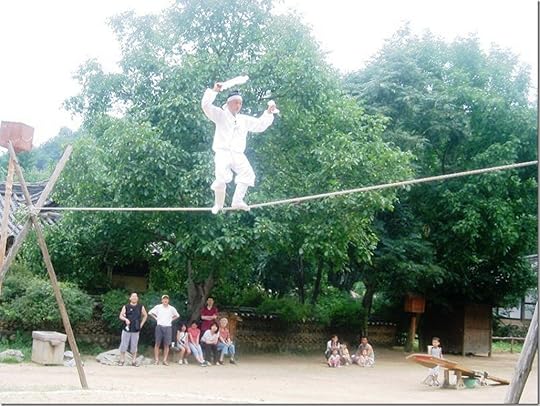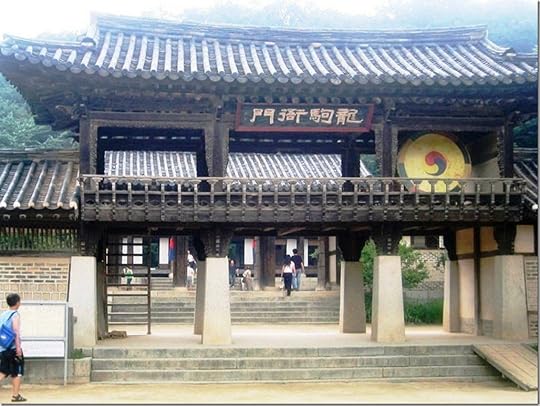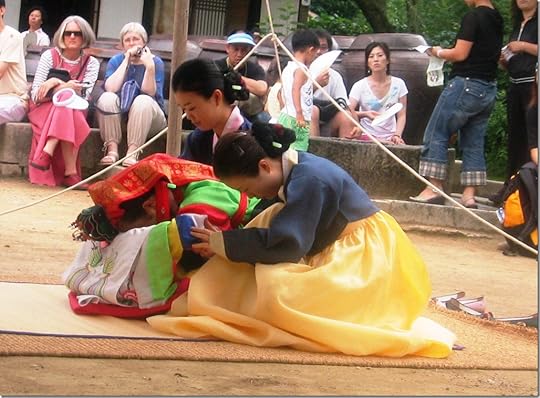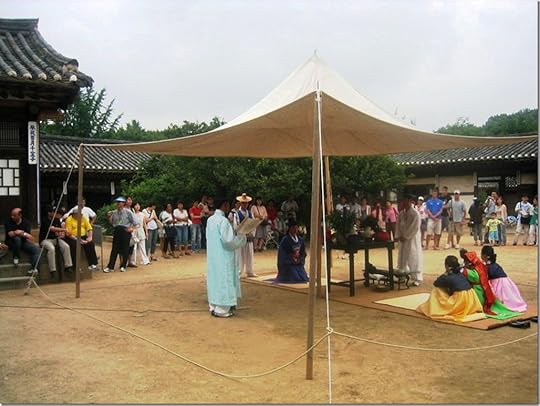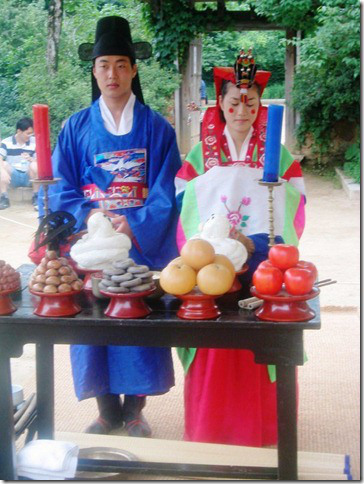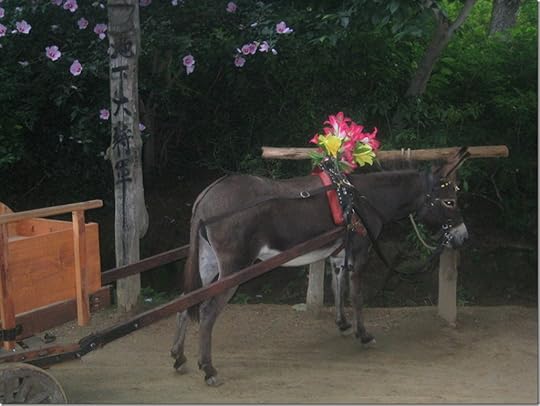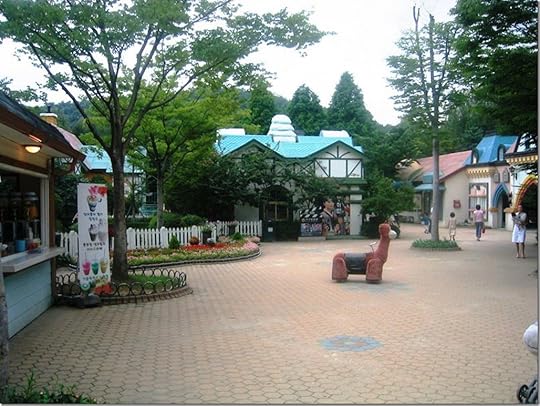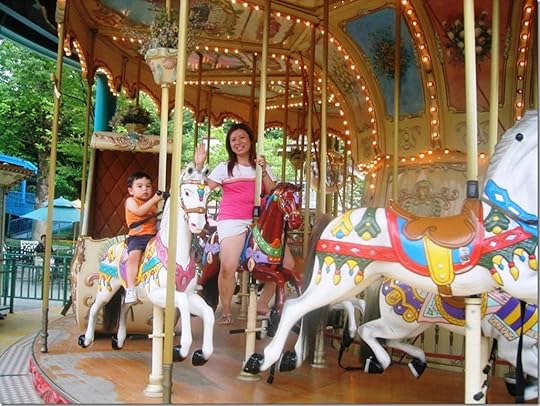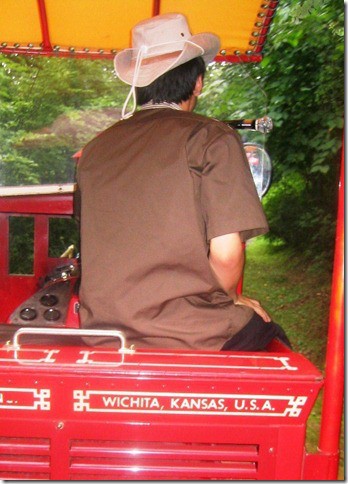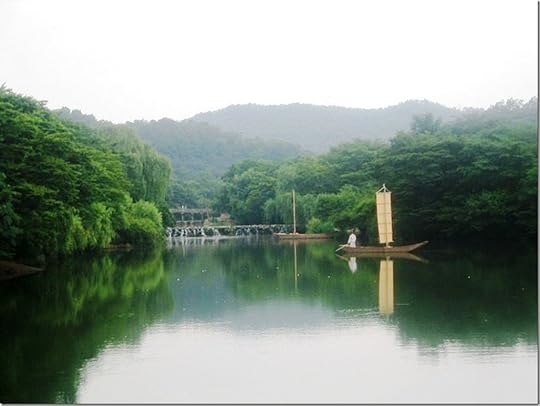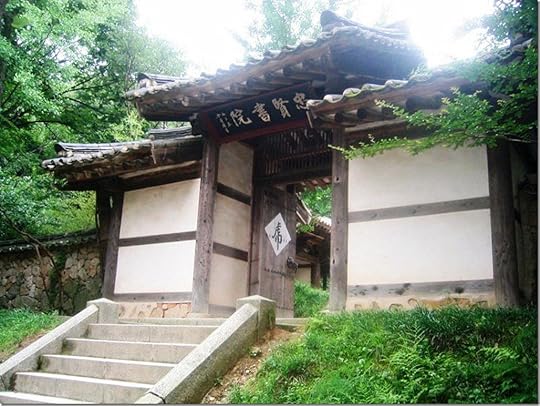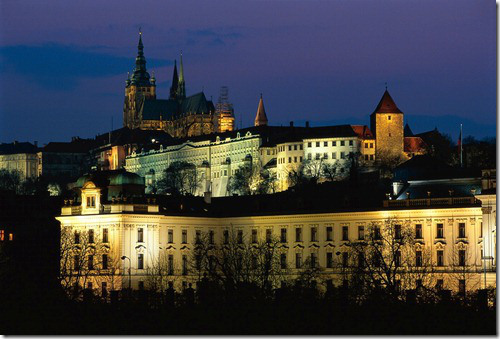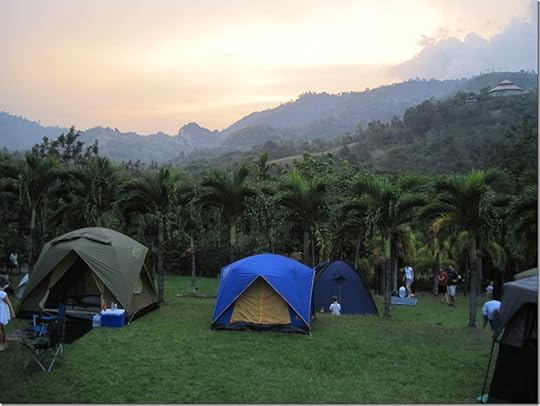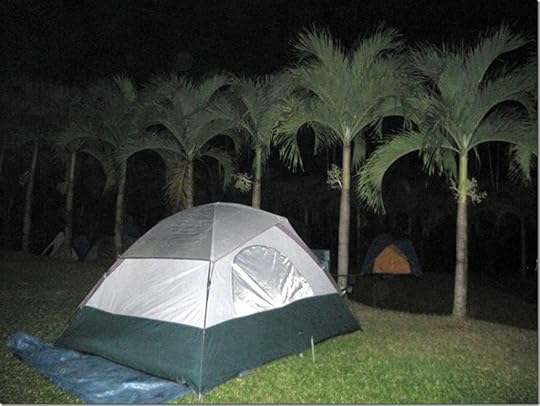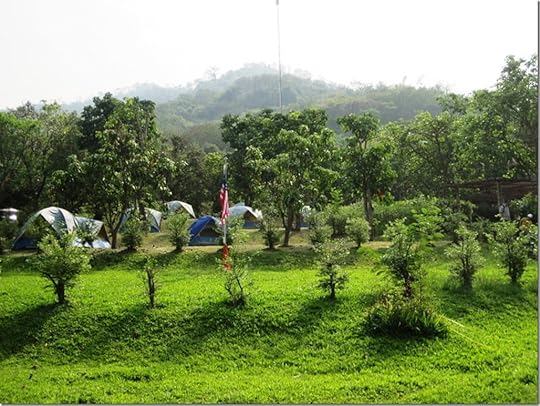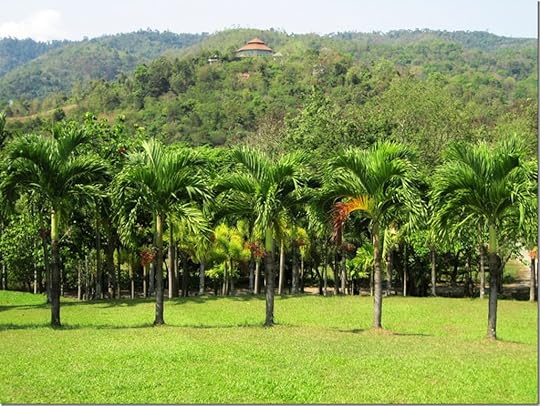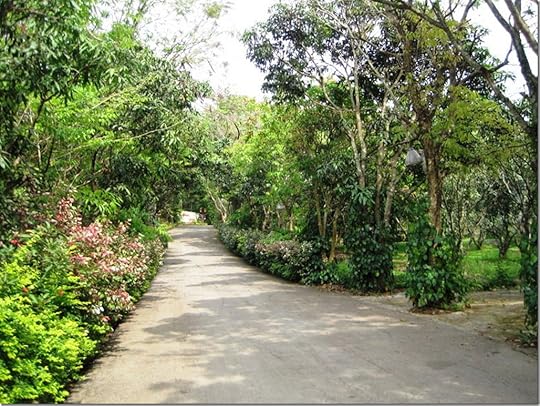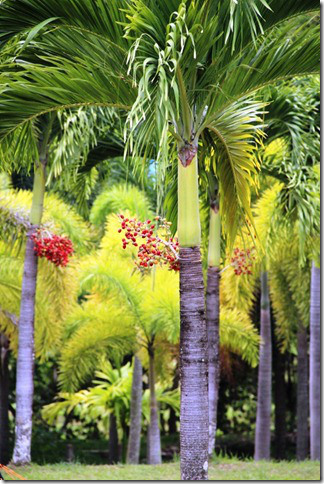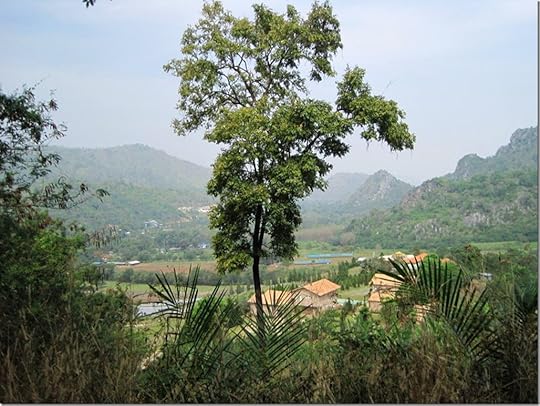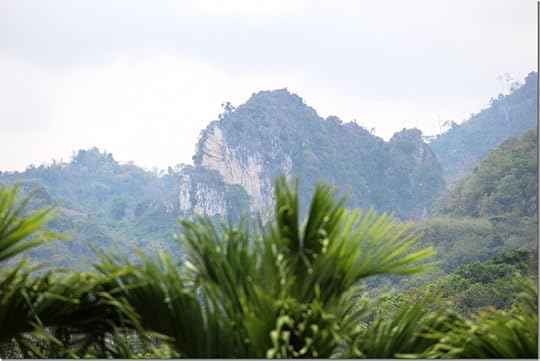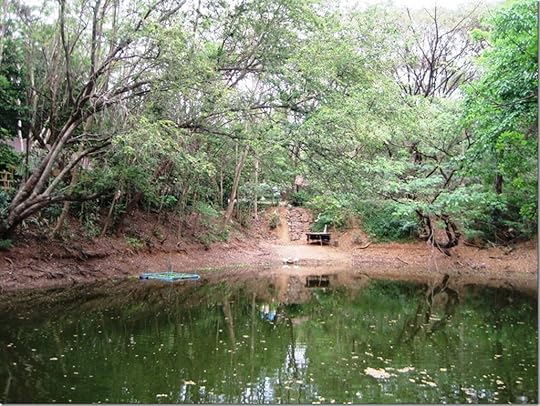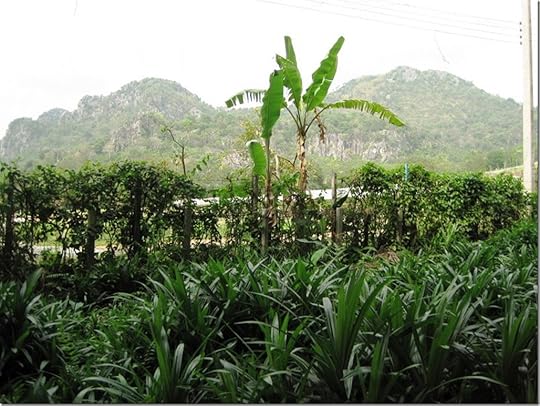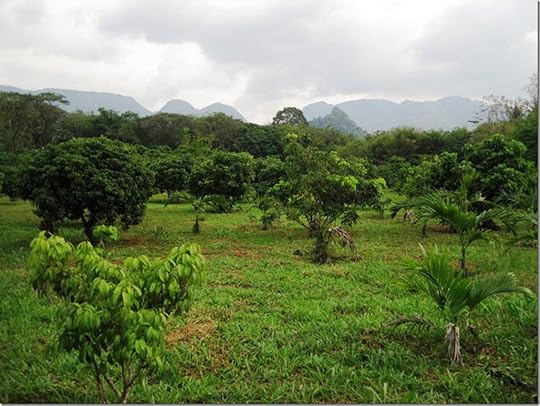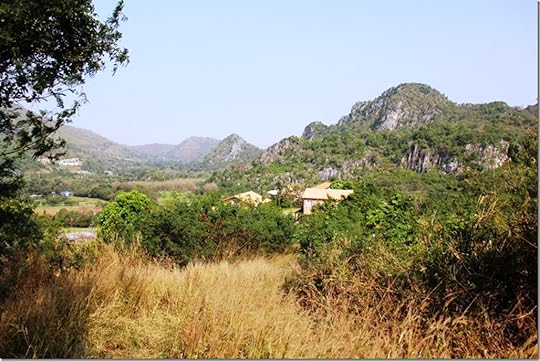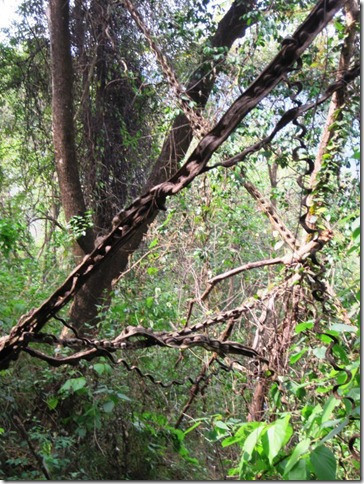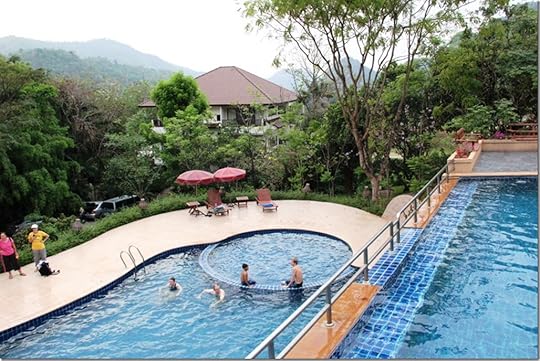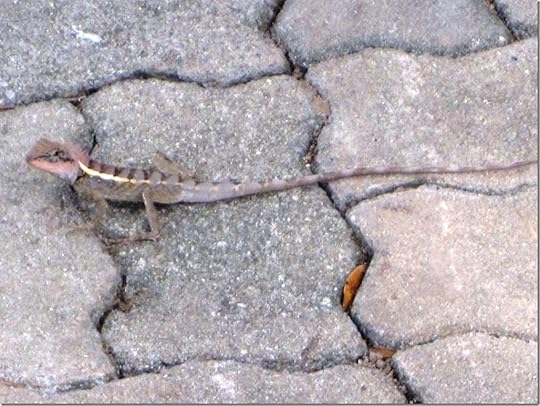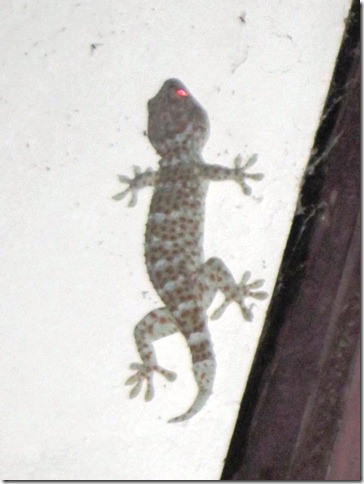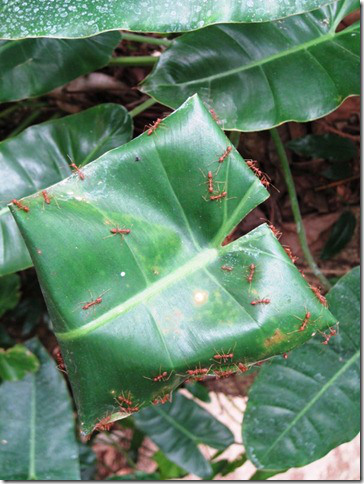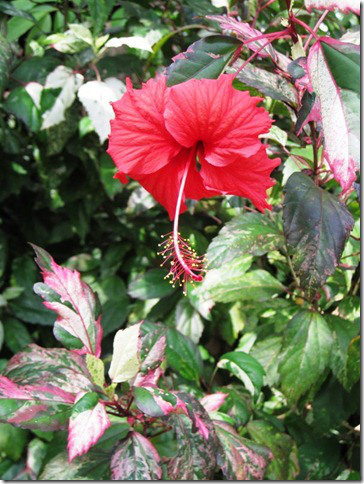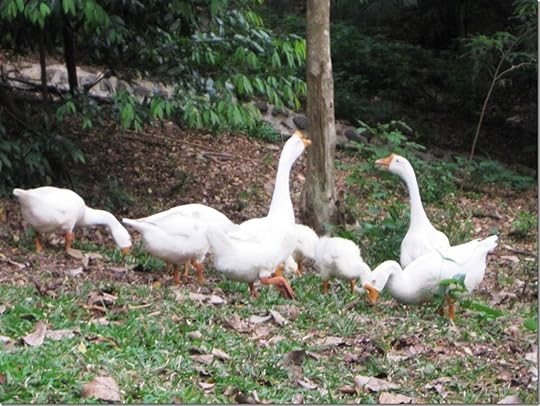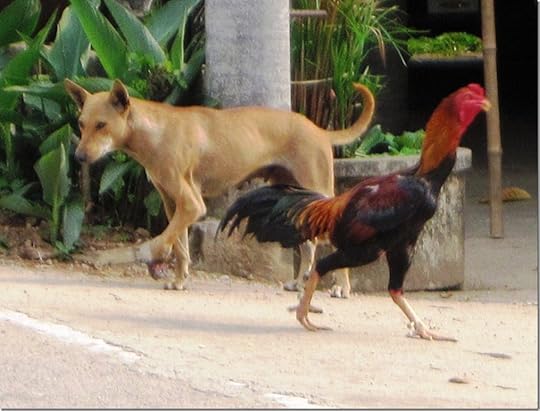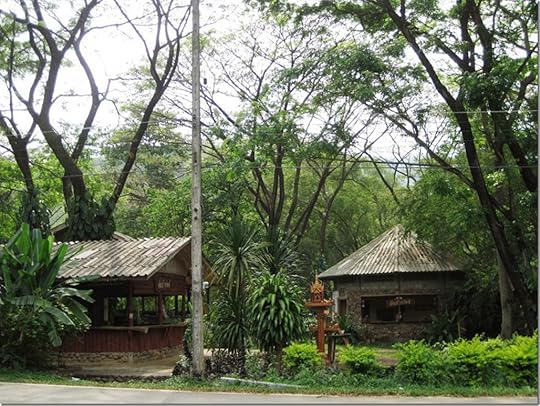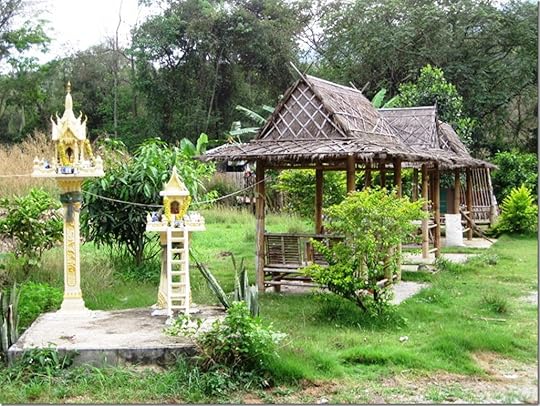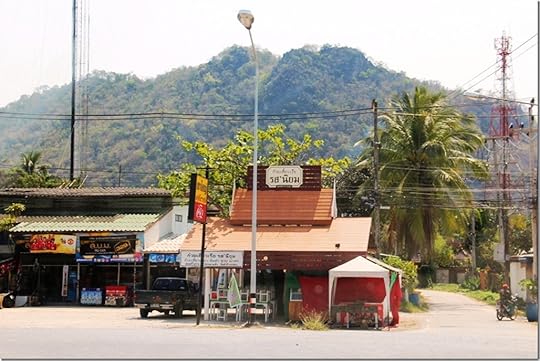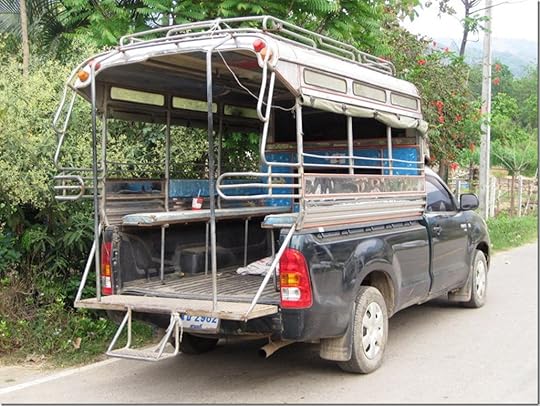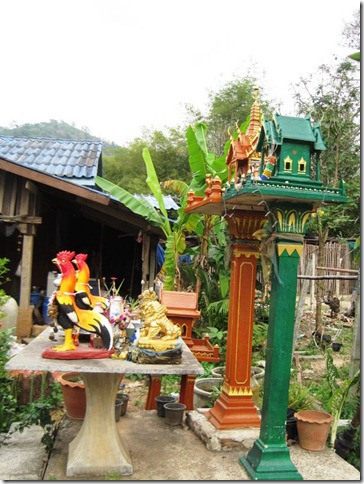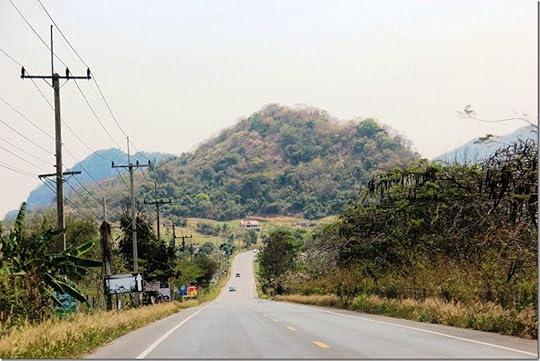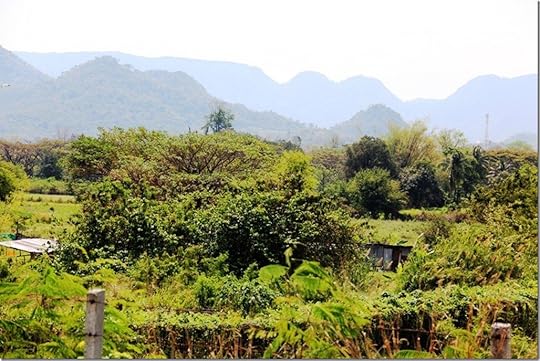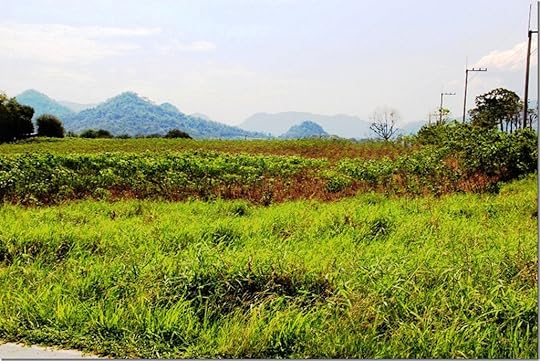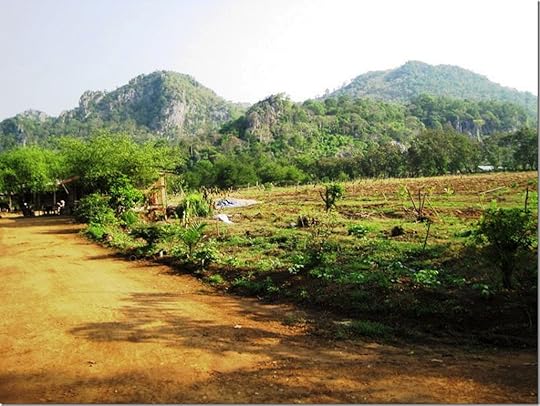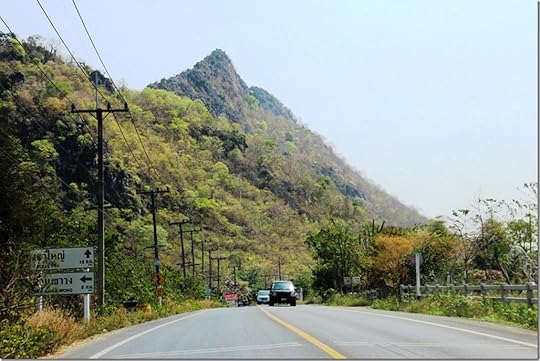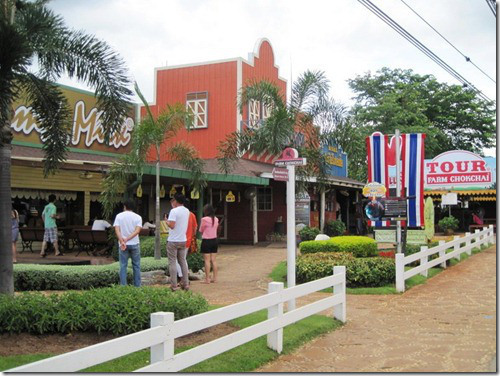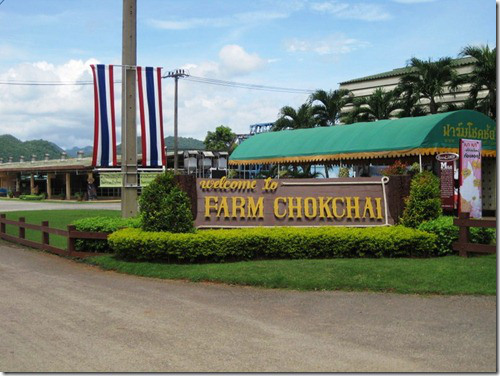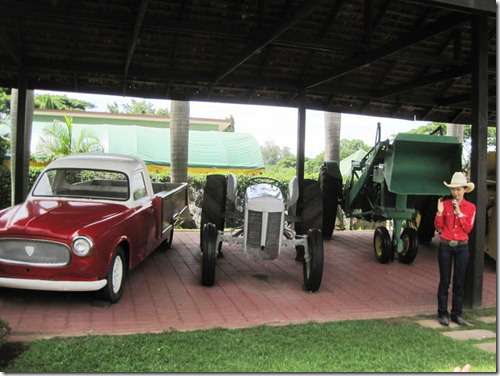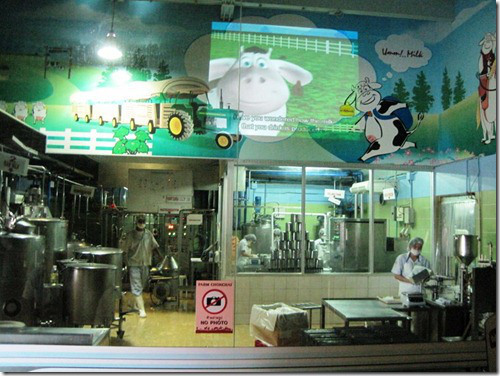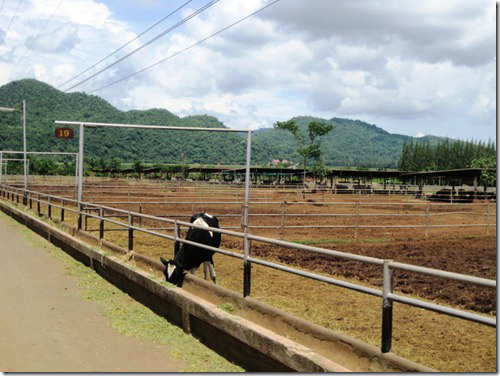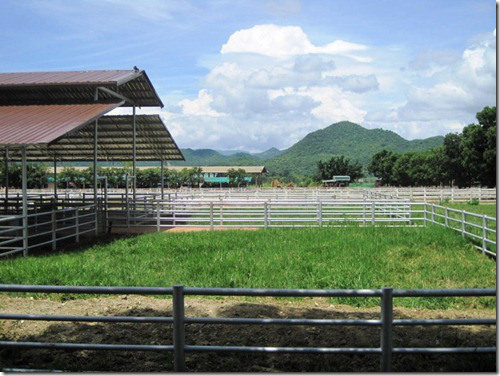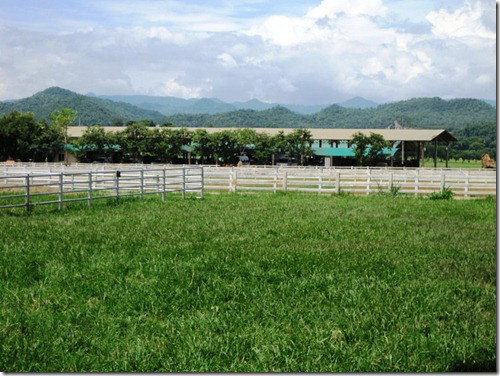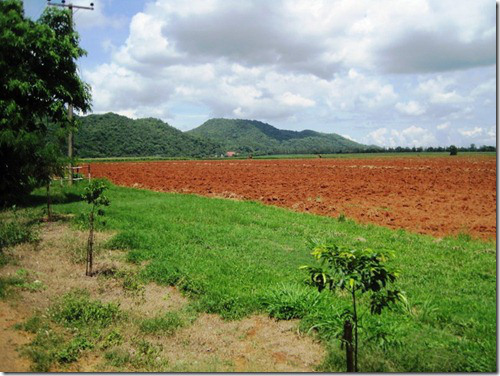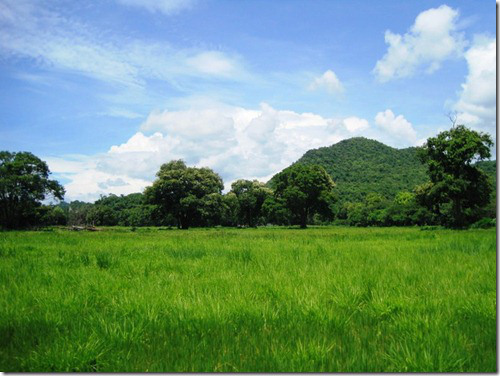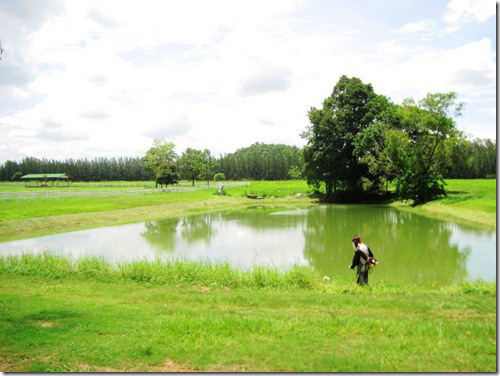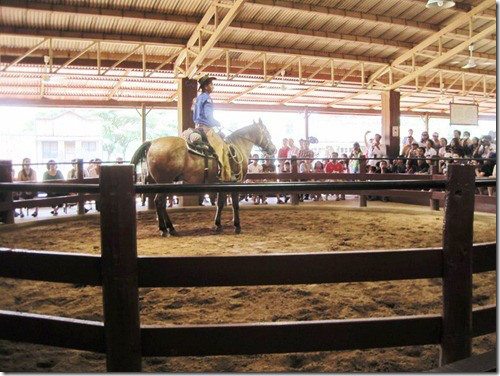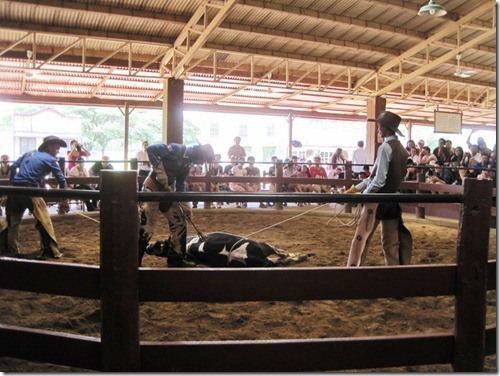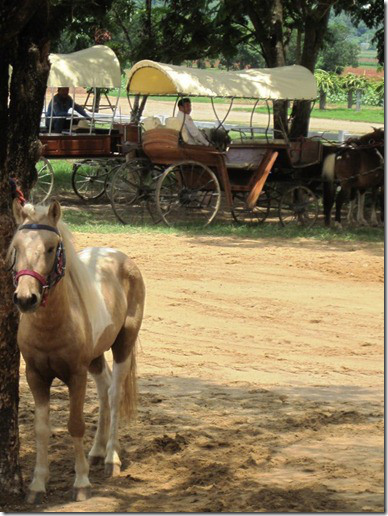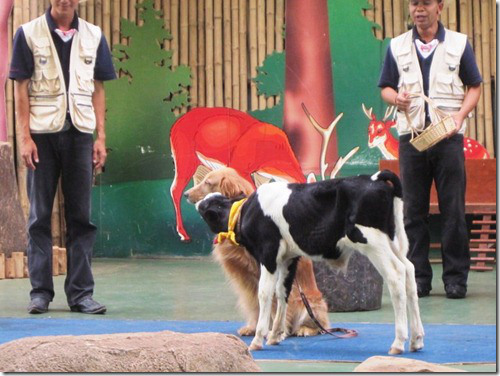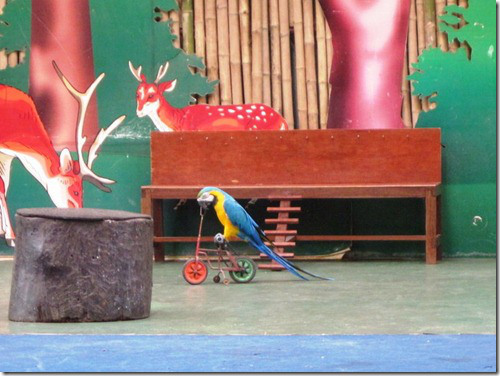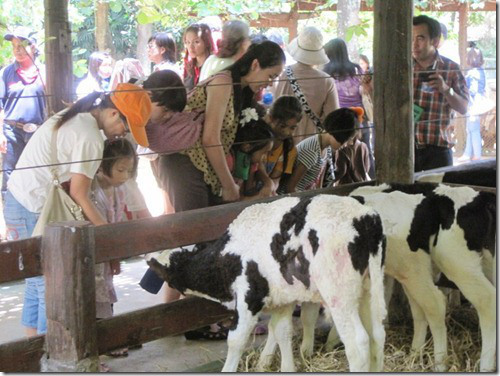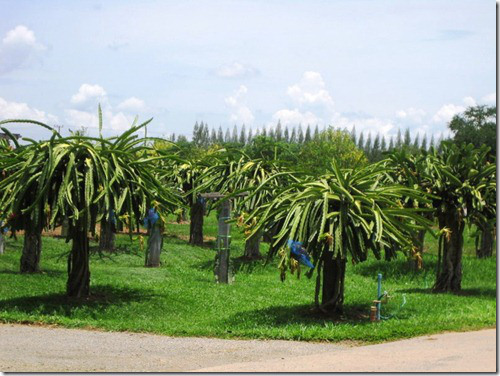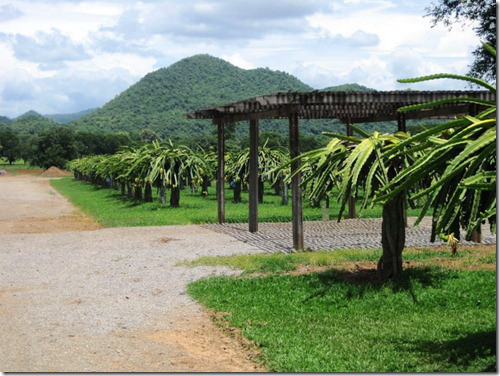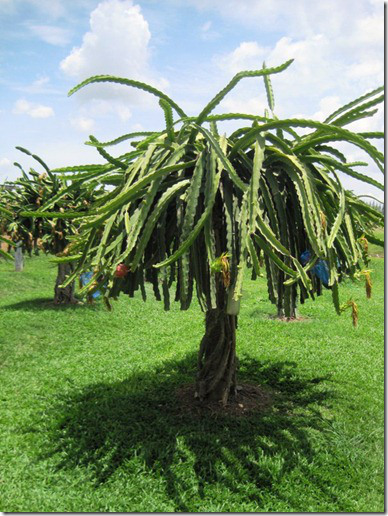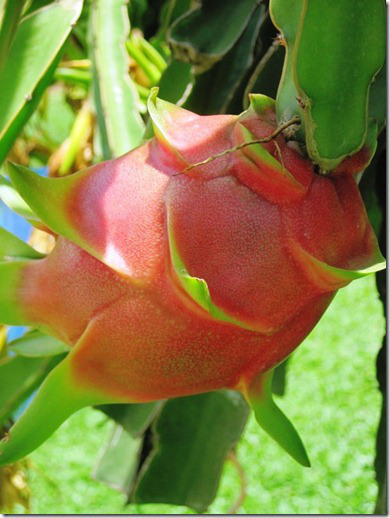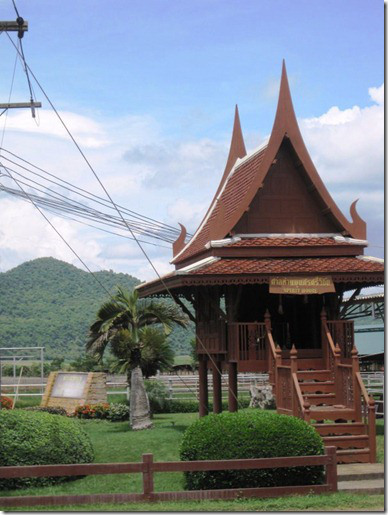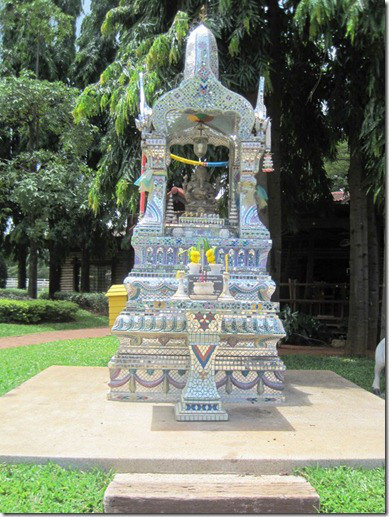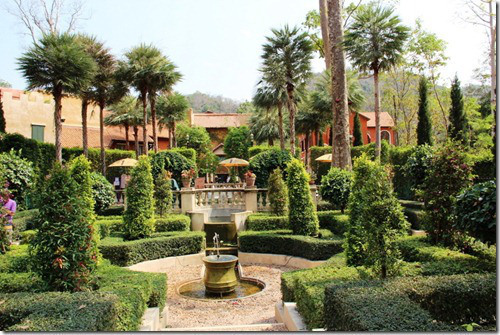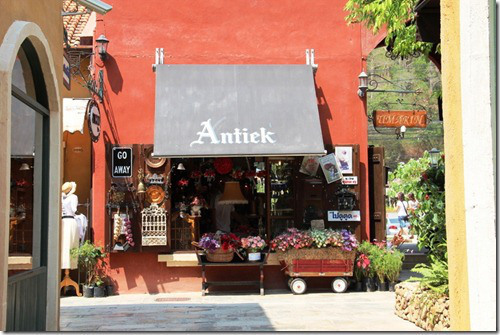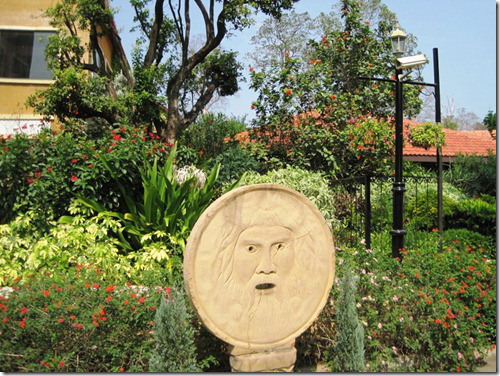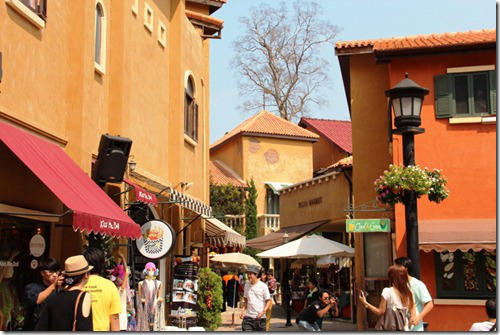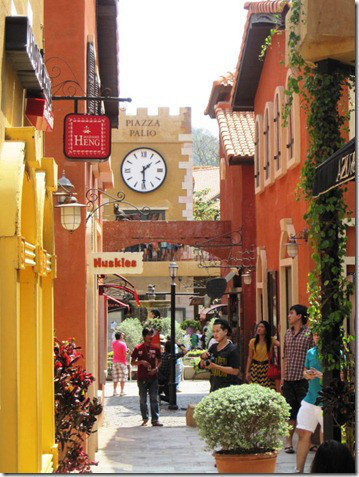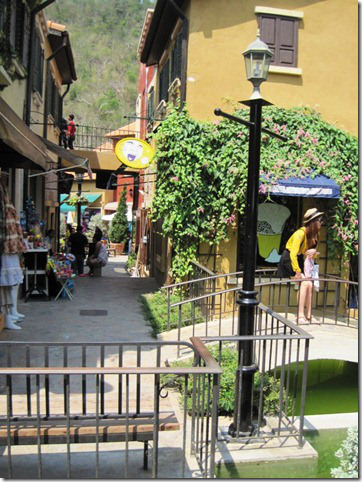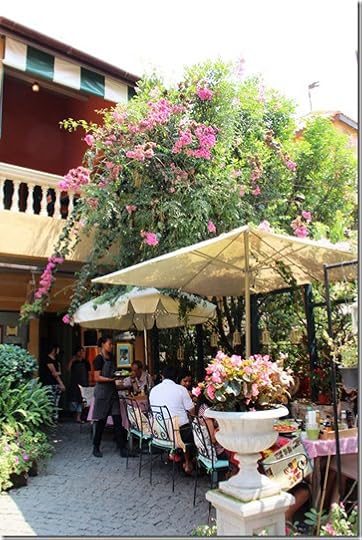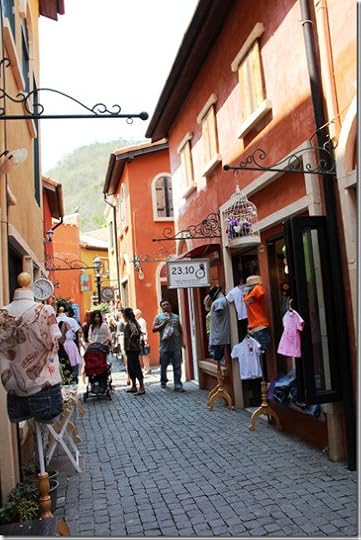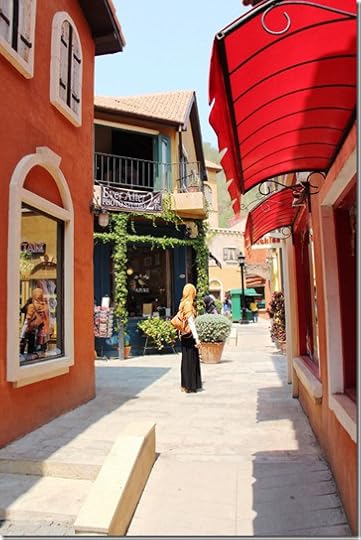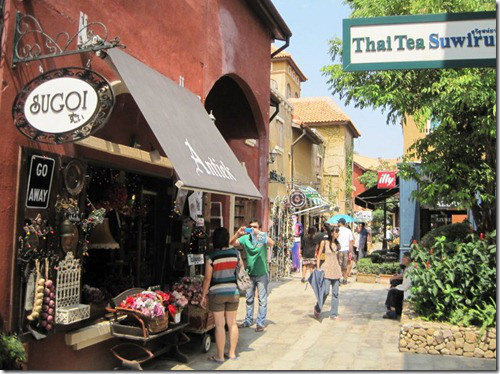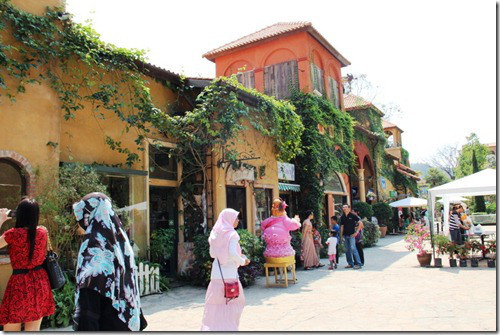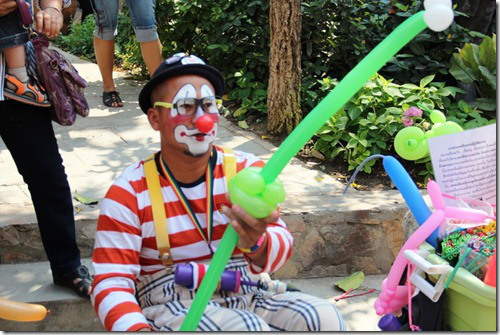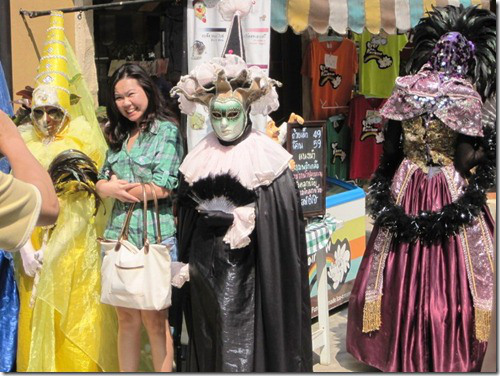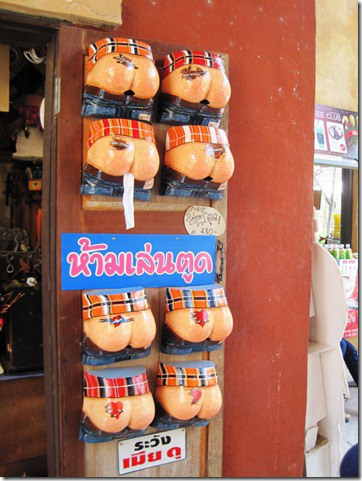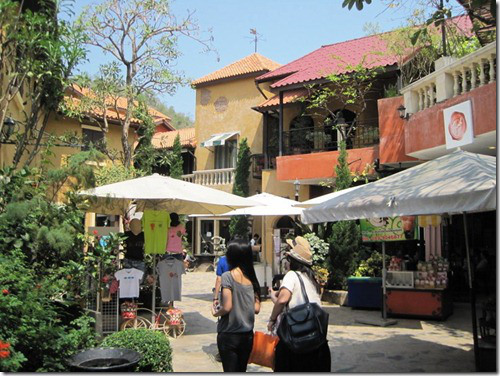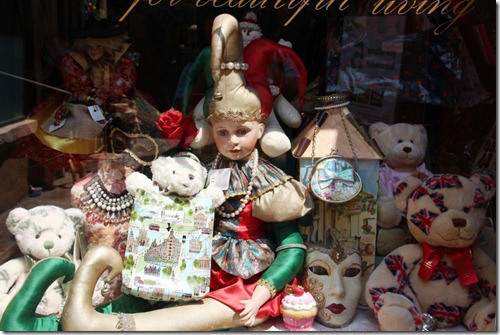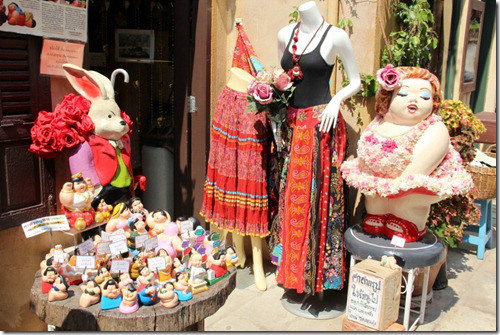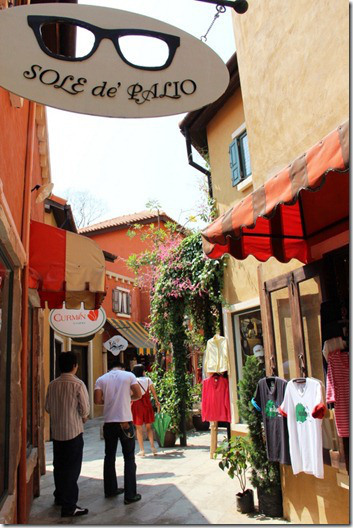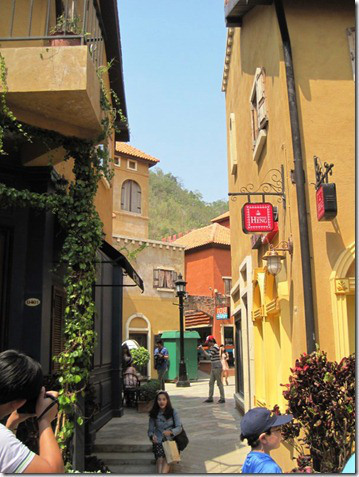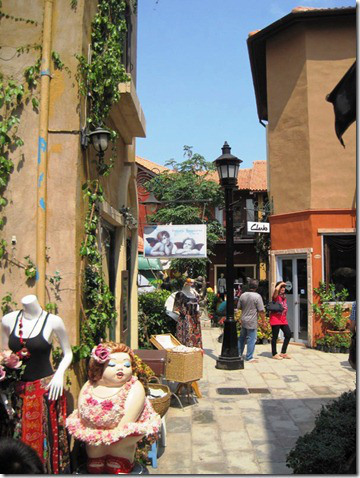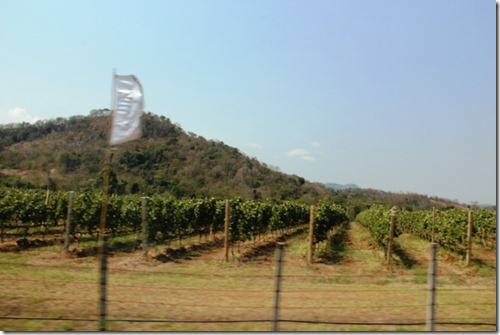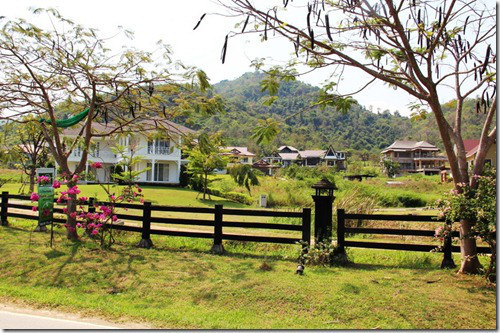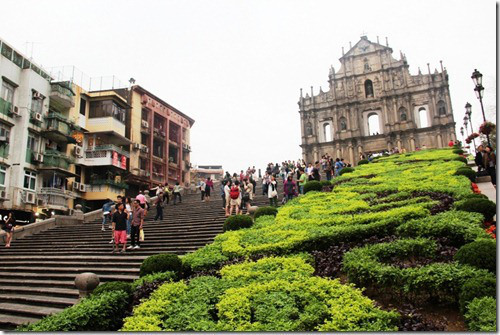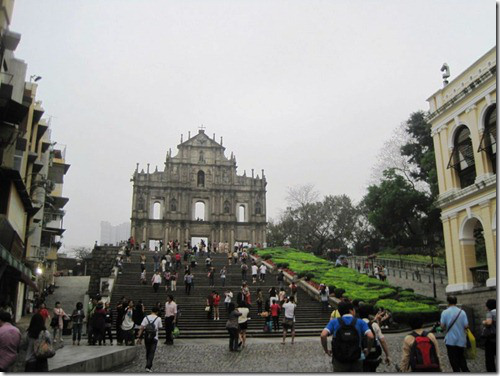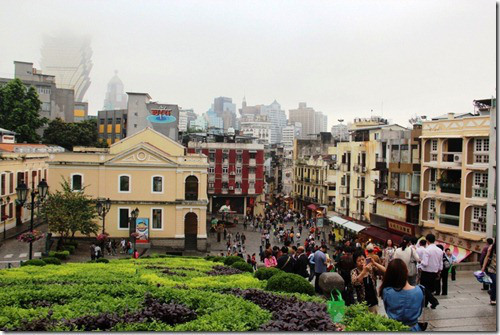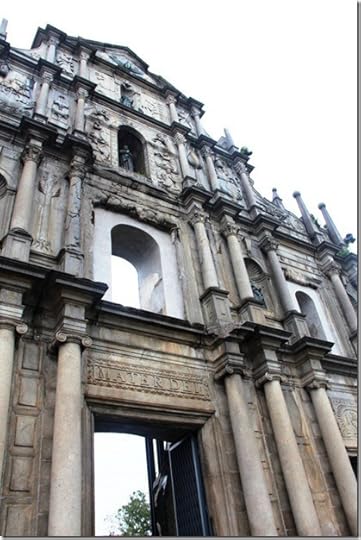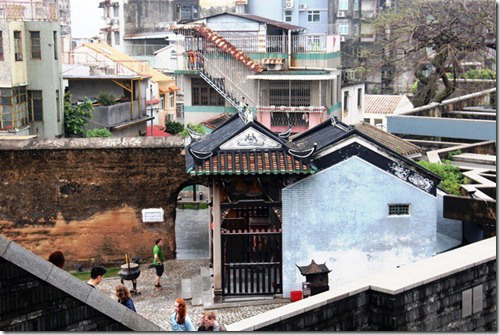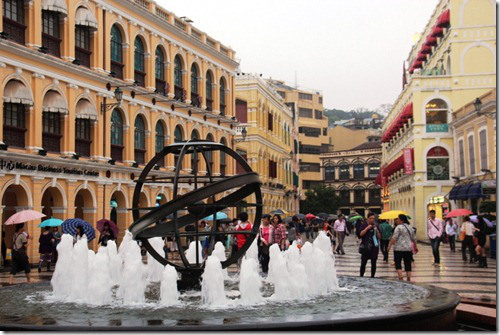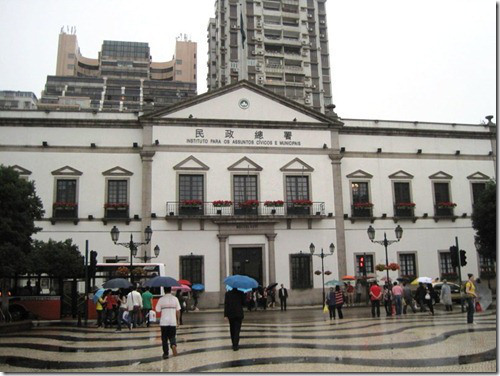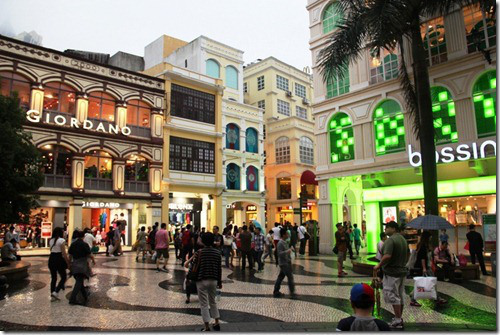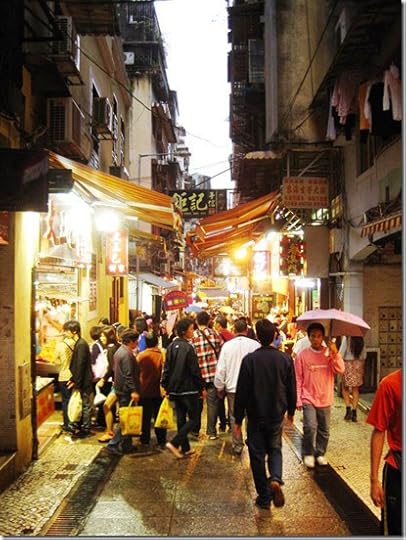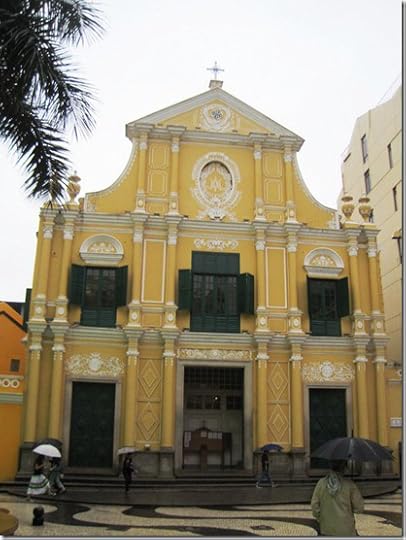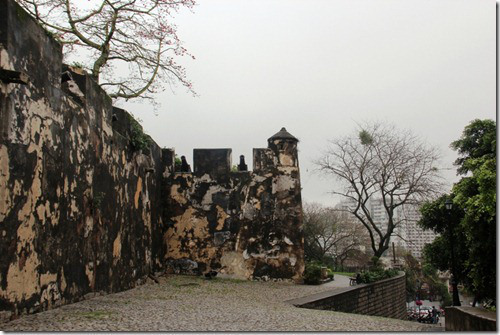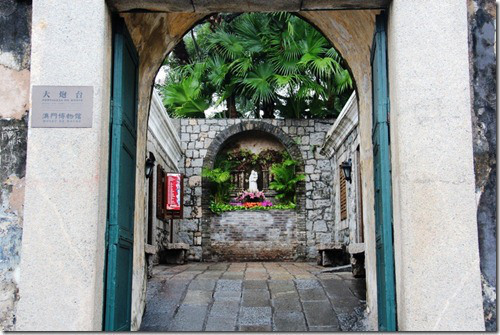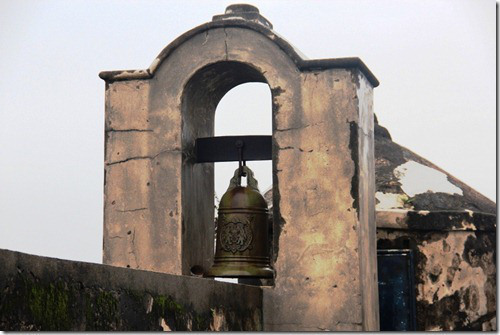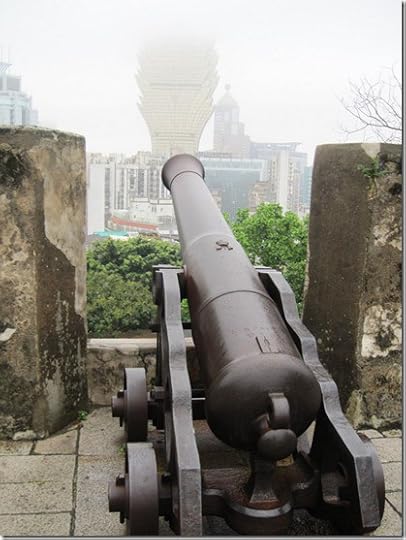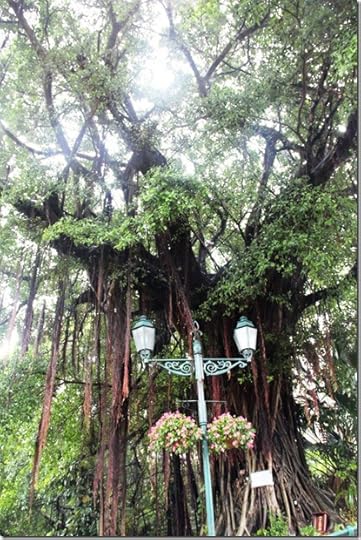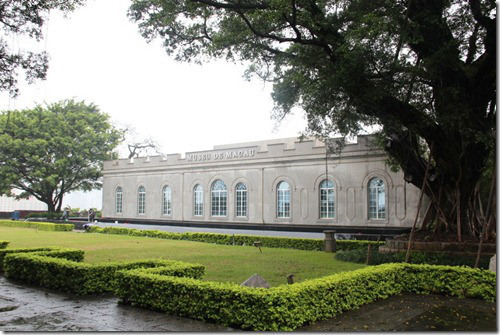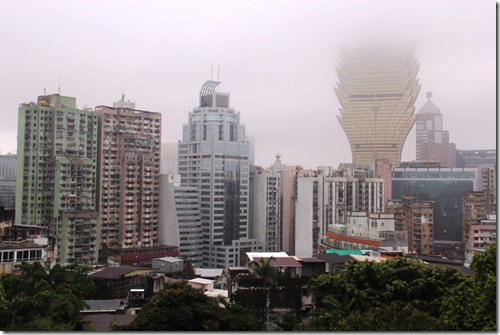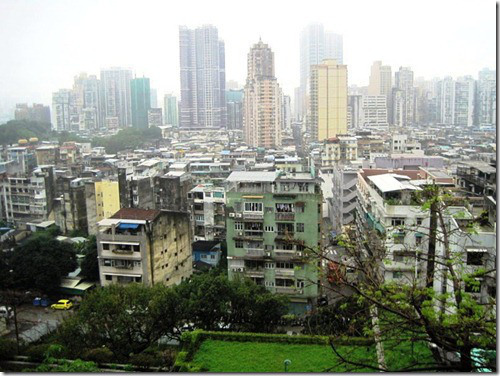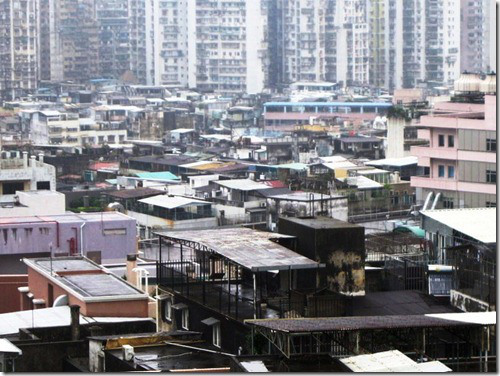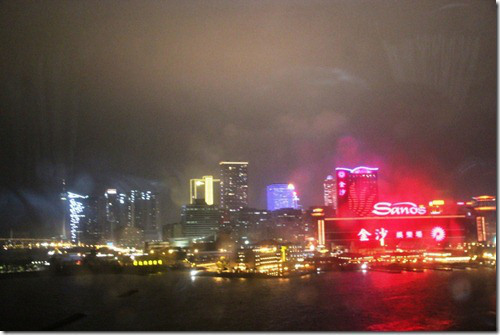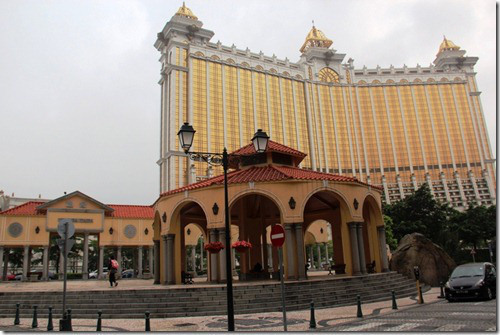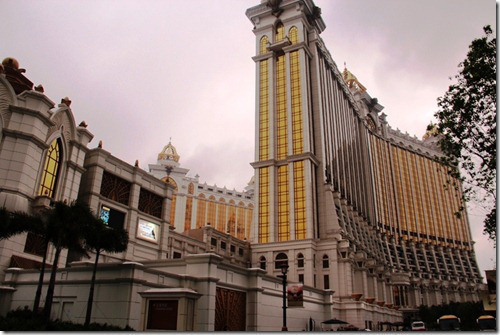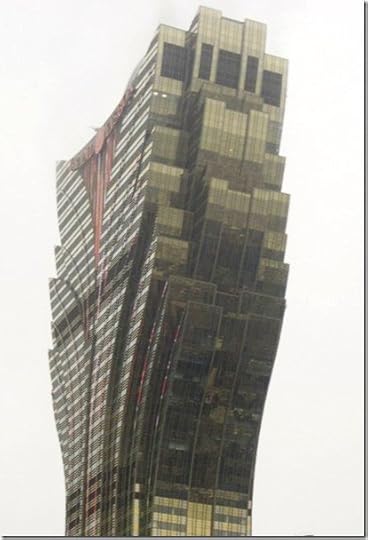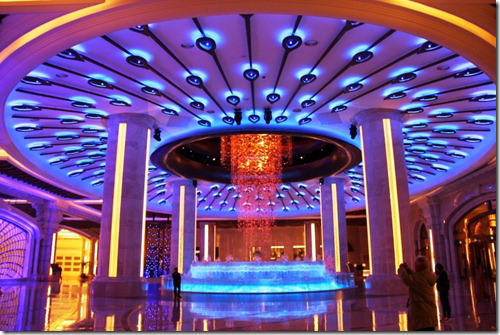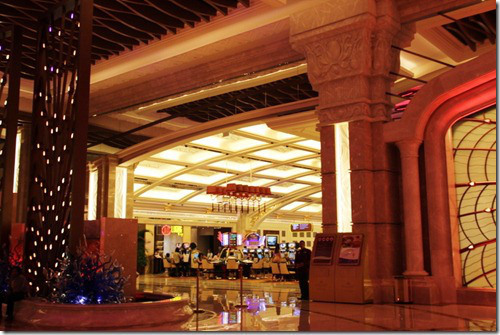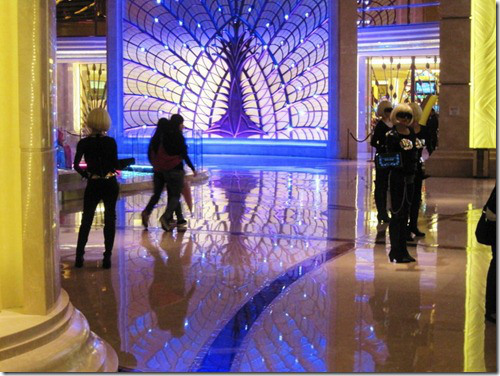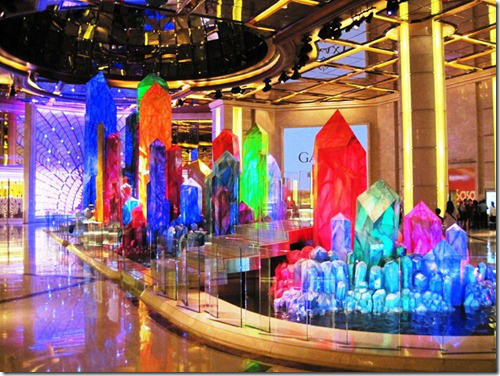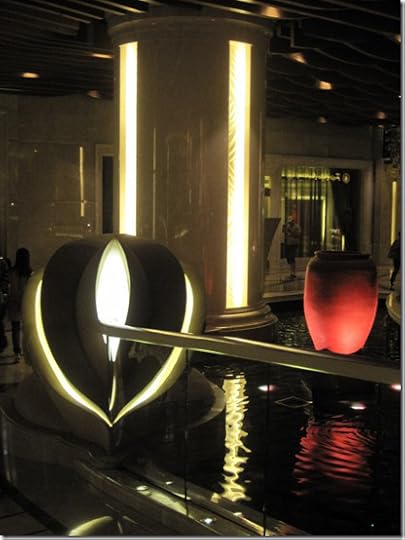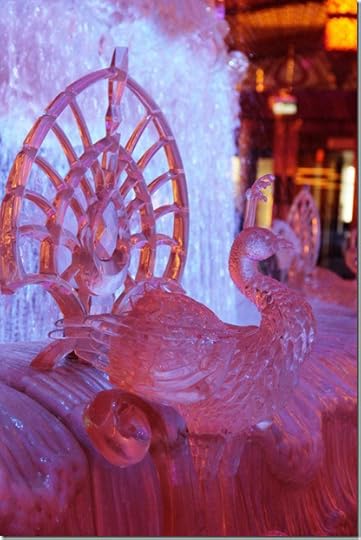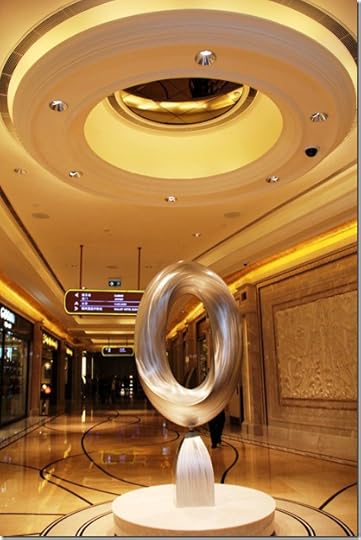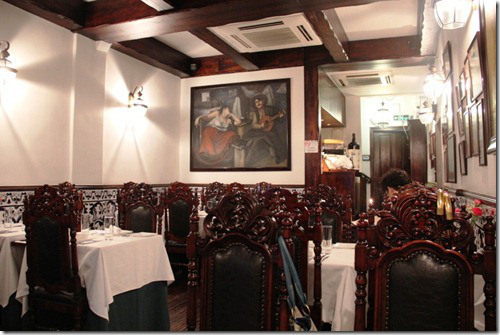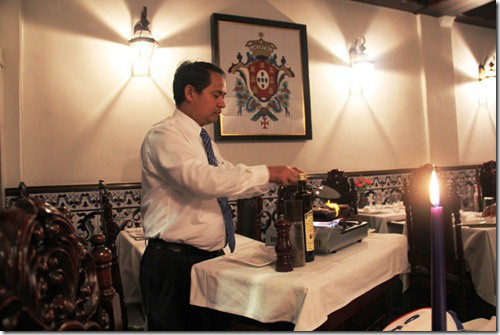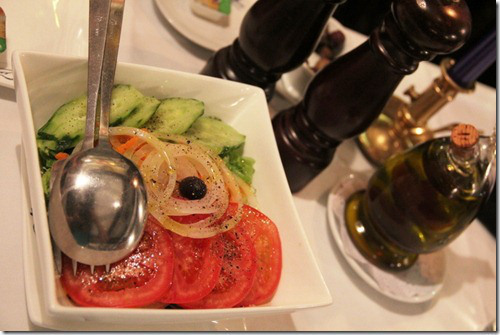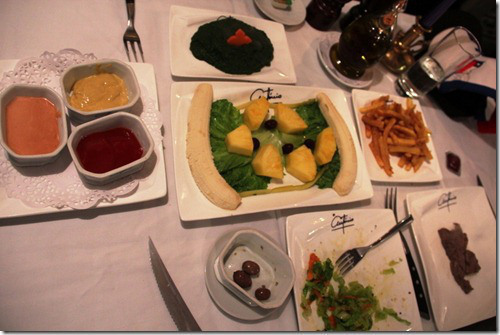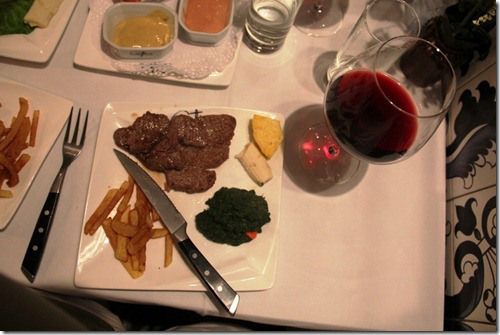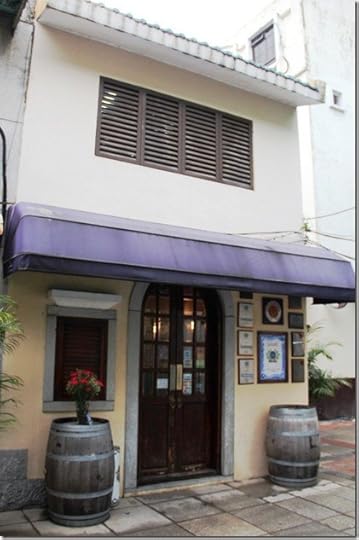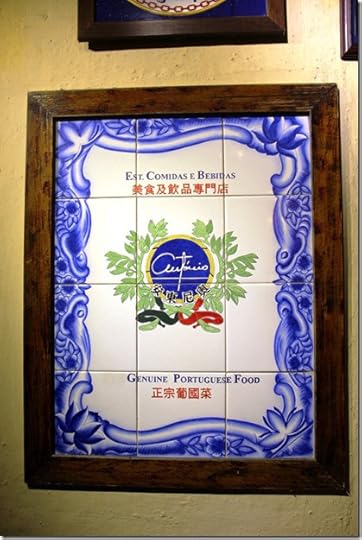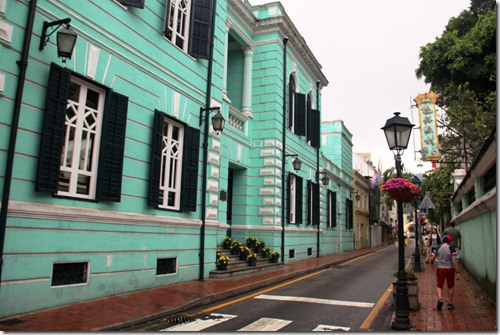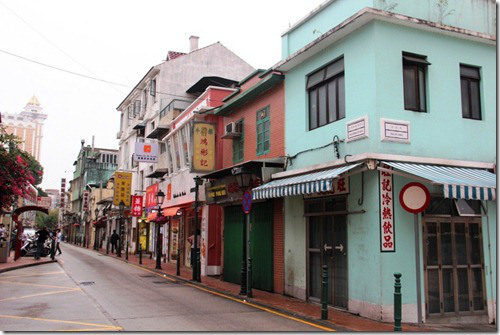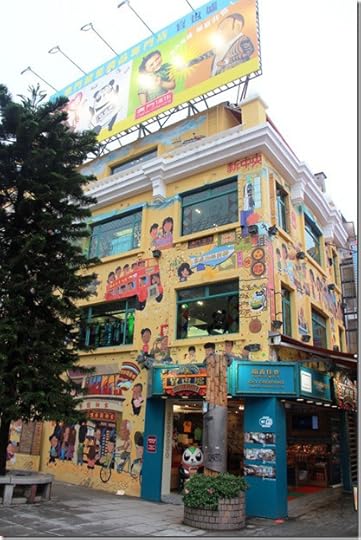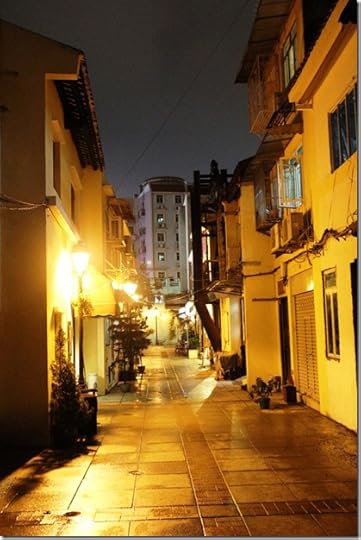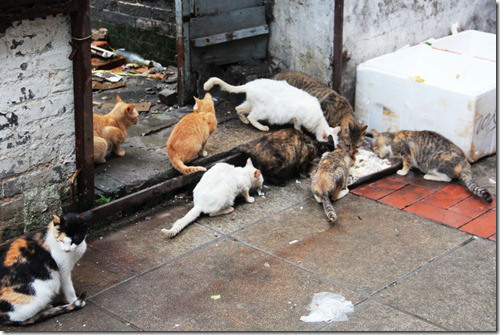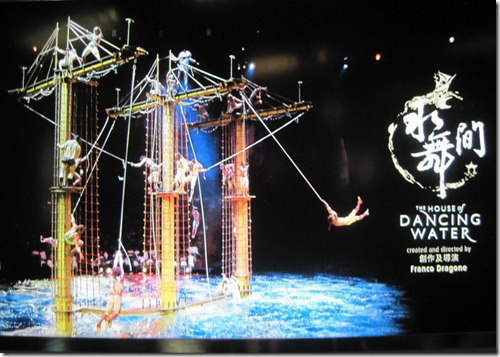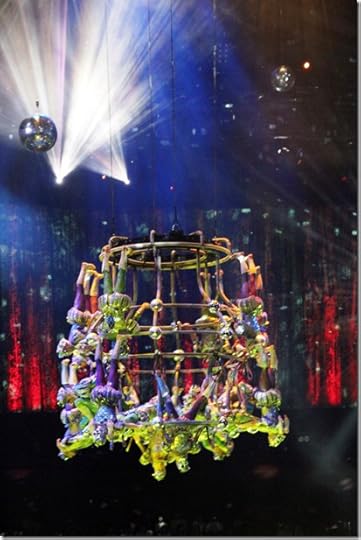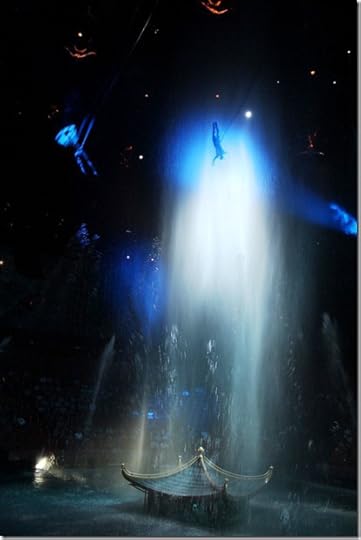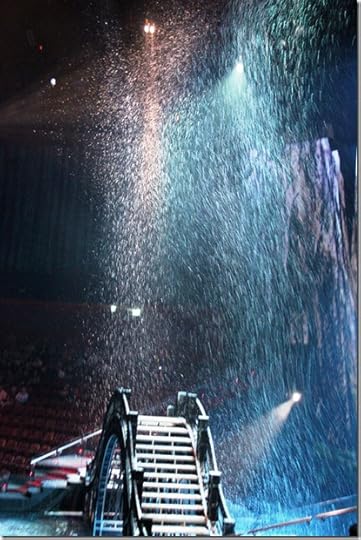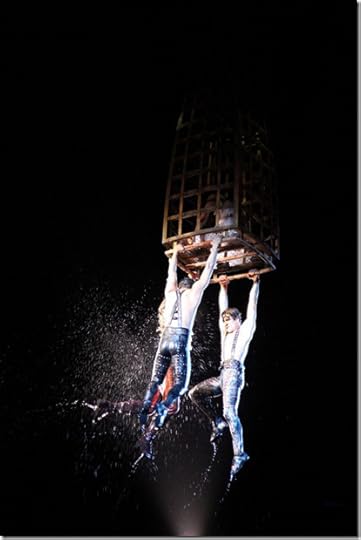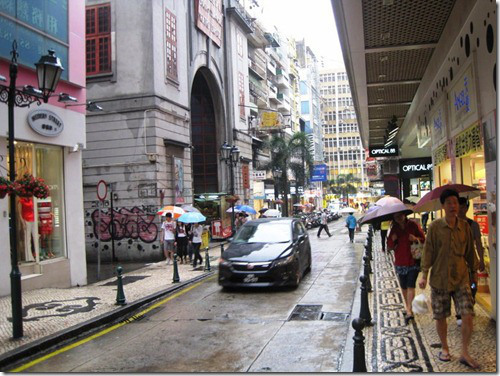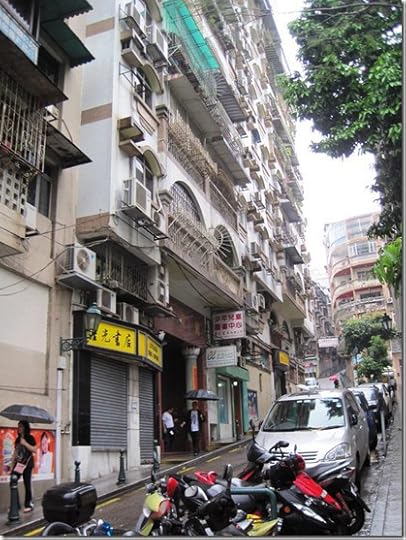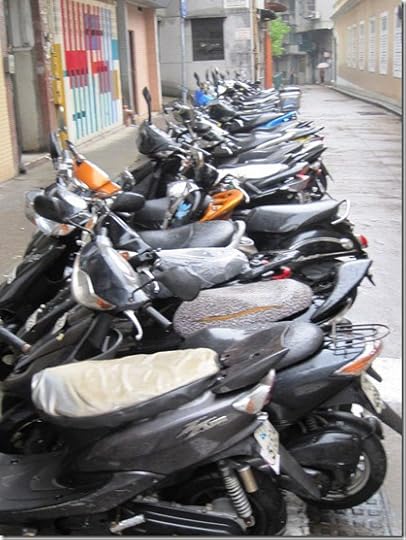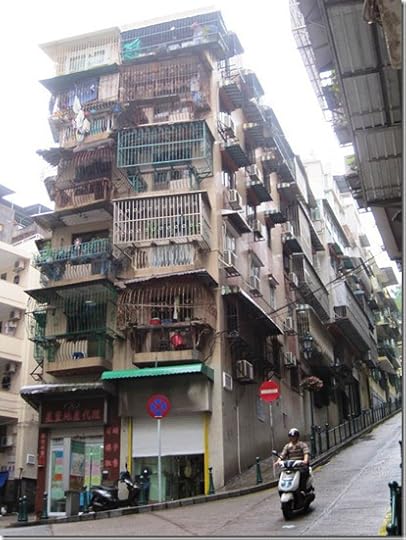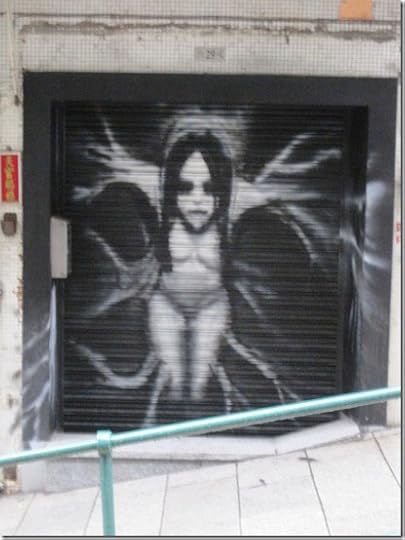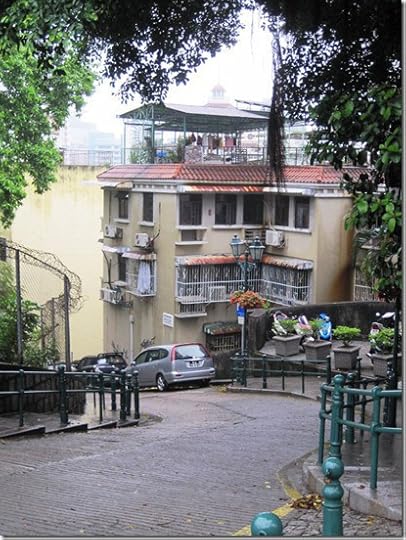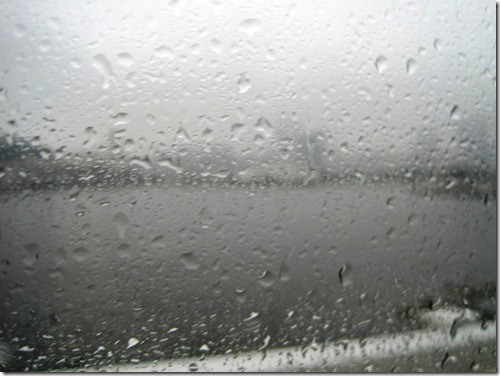M.G. Edwards's Blog, page 15
July 7, 2012
Superhero Author Interviews M.G. Edwards
Reblogged from KevinRau.com:
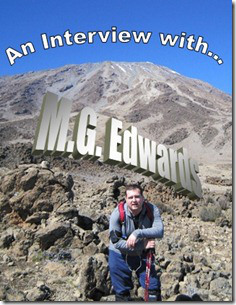 An Interview with M.G. Edwards
An Interview with M.G. EdwardsMany thanks to fellow author Kevin Rau for his invitation to interview me with a superhero twist! Although I am mortal, I’m happy to have the opportunity flex my lone superpower — my amazing ability to bend and twist prose. Thanks again, Kevin! I’ll try to keep this interview coherent and on topic. If not, just tell the words to get back in line.
When did you start writing, and was there a significant event that prompted you to do so?
When I was ten years old, my teacher asked our class to write tall tales in small groups and present them in class. Some groups chose to tell the story of Paul Bunyan and other well-known legends. Inspired by the 1981 eruption of Mount St. Helens, I wrote a tale called "How Little Big Chief Calmed the Mountain." Featured in my book Real Dreams, the story tells of how Little Big Chief made the ultimate sacrifice — offering what was most precious to him to appease an angry volcano. The role of Little Big Chief went to a good friend with cerebral palsy. His amazing performance is one of my fondest childhood memories.
Kev’s response: Hmm, I’ve always found that interesting. Personally, I have no memories below the age of 13 or so. None. I joke that I was hatched at that age. It’s fascinating to hear about others with their memories.
If you could have one superpower, what would it be? (Assuming said power would be reasonably powerful.)
I would like the ability to clone myself like Michael Keaton did in the movie Multiplicity. Not that I relish dealing with multiple versions of myself and their escapades, but they sure would come in handy to help me multitask. One could focus on brainstorming ideas for novels, another on writing outlines, a third on drafting the manuscript, and a fourth on editing it. My productivity would soar! At least, that’s how it would work in theory.
Kev’s response: Just the ability to brainstorm ideas in a group for storylines would rock.
Do you have a favorite superhero from novels, comics, or movies?
I’m a big comic book fan. My favorite superhero — long before The Avengers movie came along — has always been Thor. I mean, how can you beat a demigod? I know that Ironman seems cooler, the Hulk is a force to be reckoned with, and Captain America is America’s superhero, but it’s hard to beat a Norse god and his mighty hammer.
Kev’s response: Thor is a full-blown deity, you know. Perhaps not in the Marvel Universe, however. He is filled with much awesomeness – and Chris Hemsworth has done an excellent job portraying him in the Thor part. 
Click here to read the rest of my interview on Kevin’s super-fabulous blog!
About Kevin Rau
Kevin Rau is the author of six novels, including the H.E.R.O. series, an Illustrated Guide, and short stories in the SciFi/Superhero genre. He also does character art. He launched the Author Interview pages to promote fellow authors and create some cross-links back to their websites or social networks within the interview. Visit his interview page for more great interviews from other authors. For more information about his work, visit KevinRau.com.
Thor’s Battle Against the Jötnar (1872) by Mårten Eskil Winge is public domain.








July 4, 2012
Korean Folk Village (with Photos)
This is an update of two blog posts I published in July 2005 about our first visit to the Korean Folk Village near Seoul, South Korea. Although other folk villages in Korea also showcase traditional Korean architecture and culture, this is the one most locals think of when they hear the term “Korean Folk Village.” The village is featured on my list of Top Ten Things to Do in Korea. This post combines the original two posts into one and includes photos. The original posts are here and here.
My family ventured July 15 to the Korean Folk Village in Yongin, an exurb of Seoul. Reputed to be one of the best daytrips out of the city, it lived up to its reputation. If you visit Seoul and only have time for one daytrip, this is a great place to go.
Opened in 1974, the village is the grandest of all the folk villages dotting South Korea. Although it was built as a tourist attraction, it’s fully functional. Many of the employees dressed up as peasants and in hanbok (traditional Korean dress) also live there. It’s an intriguing sight to see next to the modern high-rise apartment buildings that loom next to the village gates.
The route to the Korean Folk Village two hours south of Seoul is not well marked, and finding northbound Interstate 1 heading north is not easy.We missed the Giheung exit off Interstate 1 on our way to the village and ended up driving past it to Osan. We backtracked on an arterial road that paralleled the freeway.
By the time we arrived, we were so hungry that we stopped to eat at “Korea Restaurant” near the village gate. We thought that a restaurant with a lofty-sounding name representing the entire country had to have delicious food, but it turned out to be a cafeteria-style, massed-produced food operation with a limited selection and mediocre cuisine. All the restaurants near the entrance looked the same. At least the friendly help took a liking to our young son! If you visit, you’re better off making your way to the far end of the village and eating at the open-air village “Bazzar.” We eventually arrived at the “Bazzar” and saw some of the delicious foods sold there. Live and learn.
After lunch we went to “Seonangdang,” a religious shrine where one can pray to and solicit favors from the village’s guardian spirits. Koreans, like many peoples around the world, at one time carved ancestral totems out of wood. The ones in the village reminded me of the totem poles made by the Native Americans and First Peoples of the Pacific Northwest, although these totems were bit more free spirited (no pun intended). Korean totems can be whimsical and a bit chaotic with laughing, asymmetrical faces. They also follow the curvature of the wood and occasionally lean.
We walked to the ceramic village, where I bought my first kimchi pot (a ceramic jar used to make kimchi, not kimchi-flavored marijuana). As the national dish of Korea, kimchi is held in high regard in Korea. No meal would be complete without a side dish of spicy and sweet cabbage, radish, or cucumber kimchi. The Italian restaurant where my wife and I occasionally dine in Seoul serves sweet pickles as a substitute (western restaurants in Korea often serve sweet pickles in lieu of banchan, or side dishes).
I’ve wanted to buy a pot for quite some time because I thought they looked decorative. Mine is not too big, perhaps one gallon (two kiloliters). It’s not large enough to make enough kimchi to feed a family. To do that, you would need to buy at least a 20-gallon drum! Although I overpaid for the jar, I was happy to buy one from the shop where it was made. Knowing its source gave it character and an identity.
We made our way through the village and visited a replica of a typical traditional Korean peasant farm.
We stopped to watch two elderly women in hanbok making silk. I had never seen how it’s made. One woman boiled silkworm cocoons, killing the larvae, separating each from its cocoon and casting it aside, and helped another woman unravel silk from the cocoon. The second woman spun the raw silk thread around a spinning wheel. Watching them produce silk was fascinating. It’s amazing that such a manual, unglamorous process ends with the creation of one of the world’s most luxurious fabrics.
In an open area in the middle of the village, we came upon some traditional Korean games, the see-saw and arrow throwing. In a simulation of the ancient Korean game, some locals tried to throw three-foot long sticks into narrow jars. (Arrow throwing is akin to the western carnival game of throwing balls through holes on a backboard.) The Korean see-saws were thick planks of wood straddling sacks of hay. My son enjoyed giving it a try. Daddy put his foot on the plank and bounced him up and down. He laughed and held on for dear life as daddy rocked him. He then took over and did it himself.
Ready for a treat, we went to the “Bazzar” and stopped for ice cream. I loved the atmosphere of the open-air market filled with traditional buildings and workers dressed in peasant clothing. At that moment, contemporary Seoul seemed far away.
We left the “Bazzar” and crossed the Arch Stone Bridge, a picturesque structure straddling a gentle river flowing through the village.
We wandered along the far bank of the river through a group of farmhouses modeled after those found on Jeju Island made of volcanic rock. For the first time, my son saw farm animals that he knew well but had never seen before—rabbits, chickens, pigs, goats, and geese. His eyes lit up when he saw the real version of animals he had read about in books and saw as toys. He especially liked the rabbits. Unfortunately, the geese were unruly. We stood about ten feet from them until four decided to come after us. We backed away quickly and moved out of their territory. I wasn’t about to get bitten by a goose and end up getting rabies shots. That would have been a lousy end to a beautiful day.
I enjoyed trying some of the rudimentary milling equipment, a gristmill and hammermill. It made me thankful that I buy my bread, rice, and pasta at a store.
After wandering through replicas of old Jeju Island farms, we ventured into an open area where a Korean acrobat on a high wire performed a delicate balancing act. He did a fabulous job defying gravity, bouncing up and down on the rope, sitting on it, straddling it, and balancing himself on top. He balanced himself grasping only a handkerchief in one hand and a large white fan in the other. He used the fan to control his balance, waving it slowly, then feverishly to bring his body back into equilibrium. Dressed in a white traditional costume, he wore a black Korean-style hat reminiscent of a Korean sage. I enjoyed his performance.
We then headed to the Manor House, where we witnessed a traditional Korean wedding. The condensed ceremony that took place in the main courtyard highlighted some of its interesting aspects. As the ceremony began, the groom took his place to the east of the wedding altar and faced west, sitting cross-legging awaiting his bride. Symbolic foods lay atop the altar, waiting to be parceled to the bride and groom. An old sage to the north of the altar faced south and read the vows from a wedding book.
A few minutes later the sage called for the bride to come. She left the Manor House and descended its steps, entering the courtyard with two female assistants. They escorted her to the altar and helped her kneel on both knees to the east so that she faced towards her future husband facing west.
As the sage chanted the wedding vows, assistants offered food and drink to the betrothed couple. They ate chestnuts, a symbol of the yangban, or Korean aristocracy, and other delicacies. The bride’s arms were crossed and positioned over her face so that the groom could not see her until the ceremony ended. Prompted by the sage, the groom and bride stood and bowed to each other. Dressed in hanbok, they made a handsome couple.
The sage pronounced the couple married, and the ceremony ended as quickly as it started. Having seen many weddings around the world, I enjoyed this unique depiction of an age-old tradition.
After the ceremony ended, we headed to a modern children’s amusement park in the southern portion of the folk village across the river. Filled with amusements, modern architecture, and contemporary sculptures, it was much different than the rest of the village. We took our son on several rides. He had been such a good sport putting up with our wandering that we knew we needed to treat him to something he would enjoy. He first rode a roving mechanical dog. He was apprehensive about getting close to real animals but had no qualms climbing aboard this slow-moving “dog.” Afterwards, mommy took him on a carrousel for his first merry-go ride, and daddy took him on his first train ride aboard the children’s train. He had a great time.
Our son had so much fun that he didn’t nap all day long. Once we finished and went home, he was out like a light. I was tired too and wanted to do the same but had to wait until home to crash. Our fun adventure at the Korean Folk Village wore all of us out.
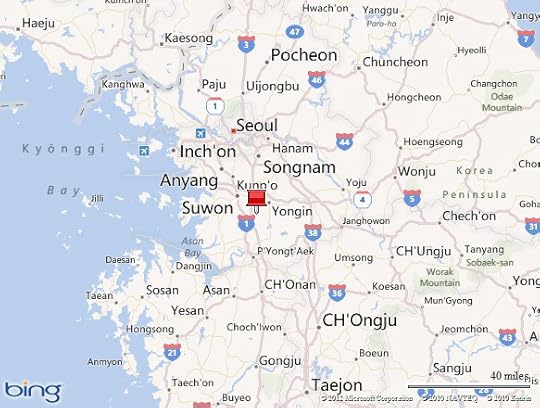
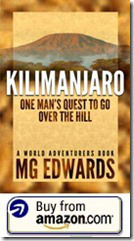 M.G. Edwards is a writer of books and stories in the mystery, thriller and science fiction-fantasy genres. He also writes travel adventures. He is author of Kilimanjaro: One Man’s Quest to Go Over the Hill, a non-fiction account of his attempt to summit Mount Kilimanjaro, Africa’s highest mountain and a collection of short stories called Real Dreams: Thirty Years of Short Stories. His books are available as an e-book and in print on Amazon.com and other booksellers. He lives in Bangkok, Thailand with his wife Jing and son Alex.
M.G. Edwards is a writer of books and stories in the mystery, thriller and science fiction-fantasy genres. He also writes travel adventures. He is author of Kilimanjaro: One Man’s Quest to Go Over the Hill, a non-fiction account of his attempt to summit Mount Kilimanjaro, Africa’s highest mountain and a collection of short stories called Real Dreams: Thirty Years of Short Stories. His books are available as an e-book and in print on Amazon.com and other booksellers. He lives in Bangkok, Thailand with his wife Jing and son Alex.
For more books or stories by M.G. Edwards, visit his web site at www.mgedwards.com or his blog, World Adventurers . Contact him at me@mgedwards.com , on Facebook , on Google+, or @m_g_edwards on Twitter.
© 2012 Brilliance Press. All rights reserved. No part of this work may be reproduced or transmitted without the written consent of the author.








July 1, 2012
Thoughts & Sayings (July 2012)
Here are some thoughts and sayings I posted on Twitter and/or Facebook in June. To my knowledge, I made these up (for better or for worse). Sit back, relax, and enjoy the write!
Encouraging Words
1. Whenever life seems to have no purpose, I lecture it about getting motivated.
2. Happy Monday! I don’t know why I’m happy to start a work week, but I wish it would stop.
3. Being flawed is a prerequisite to being appreciated for something you’ve done well.
 4. The word “momentum” begins with a flash and ends with a pause.
4. The word “momentum” begins with a flash and ends with a pause.
5. If only life had a breaker panel where you could flip a switch when you’re overloaded and ready to short circuit.
6. Friends come and go. Sometimes I wish they would sit and stay for a while.
Twisted Words
7. Why does the word “Saturday” begin with “sat” when most people are out and about enjoying the weekend?
 8. The world doesn’t owe you a scent. You have to excrete it yourself.
8. The world doesn’t owe you a scent. You have to excrete it yourself.
9. A round dog with a tough exterior but a soft demeanor is a melon collie.
10. I don’t know what on Earth is going on. Thank heavens I’m well-grounded because I’m feeling spacy.
Holidays & Events
11. May annoys June because she always finishes first and is much too flowery.
12. It’s ironic that Father’s Day falls on a Sonday.
13. The financial markets are bloated because they digested too much Greece.
14. Rumor has it that the sequel to the movie Prometheus will be called “Icarus” and will feature a group of scientists searching for the origin of mankind that discovers that humanity was actually created by a violent, warlike group of human beings. Word has it that the film will be set on Earth.
Random Musings
15. A week is an artificial construct. Thank goodness someone invented weekends.
16. At this moment, millions of people are spending quality time with their tech gadgets.
17. The drawback to multitasking is that you can only finish one task at a time.
18. It’s been so long since statesmen ran our country that no one’s bothered to make the word gender neutral.
19. I drive faster in America because I use kilometers.
20. One of the most difficult travel decisions is deciding whether to consume or throw out perishable food before leaving on a trip.
21. Do Slovaks write Czechs?
Click here to read the previous batch of Thoughts and Sayings.
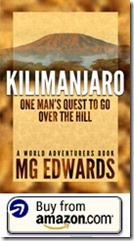 M.G. Edwards is a writer of books and stories in the mystery, thriller and science fiction-fantasy genres. He also writes travel adventures. He is author of Kilimanjaro: One Man’s Quest to Go Over the Hill, a non-fiction account of his attempt to summit Mount Kilimanjaro, Africa’s highest mountain and a collection of short stories called Real Dreams: Thirty Years of Short Stories. His books are available as an e-book and in print on Amazon.com and other booksellers. He lives in Bangkok, Thailand with his wife Jing and son Alex.
M.G. Edwards is a writer of books and stories in the mystery, thriller and science fiction-fantasy genres. He also writes travel adventures. He is author of Kilimanjaro: One Man’s Quest to Go Over the Hill, a non-fiction account of his attempt to summit Mount Kilimanjaro, Africa’s highest mountain and a collection of short stories called Real Dreams: Thirty Years of Short Stories. His books are available as an e-book and in print on Amazon.com and other booksellers. He lives in Bangkok, Thailand with his wife Jing and son Alex.
For more books or stories by M.G. Edwards, visit his web site at www.mgedwards.com or his blog, World Adventurers . Contact him at me@mgedwards.com , on Facebook , on Google+, or @m_g_edwards on Twitter.
© 2012 Brilliance Press. All rights reserved. No part of this work may be reproduced or transmitted without the written consent of the author.








June 30, 2012
I Received the One Lovely Blog Award
 The One Lovely Blog Award. What, another award for World Adventurers? I can’t believe it! Not one, but two writer/bloggers I admire nominated this blog for the OLB Award. Thank you very much! Words cannot express how much I appreciate your thoughtfulness, but I’ll try.
The One Lovely Blog Award. What, another award for World Adventurers? I can’t believe it! Not one, but two writer/bloggers I admire nominated this blog for the OLB Award. Thank you very much! Words cannot express how much I appreciate your thoughtfulness, but I’ll try.
A BIG, HEARTY ROUND OF THANK YOUS
A big THANK YOU goes to my colleague and lovely friend Lada Ray, who is one of my favorite bloggers and writers. After she received this prodigious honor, she nominated me for it in early June on the heels of receiving the Versatile Blogger Award (VBA) from me. While I can neither confirm nor deny it, this award may have had something to do with the fact that I adore her thriller Gold Train and amazing heroine, Jade Snow.
Another hearty THANK YOU goes to my enigmatic and witty friend R.M. Wilburn, who received the splendiferous OLB Award and then nominated me for one in mid-June. Whether it has anything to do with the fact that I nominated her for a VBA or think her book Magpie & Dilly is the best novel with that title in recorded history, I can’t be sure. Thank you, R.M. I’m convinced that your initials stand for Really Magnificent.
Whatever the reason, I thank you, Lada and R.M. I really appreciate this honor and am proud to call you colleagues and friends.
ABOUT THE AWARD
As I am wont to do, I did some research into the history of the One Lovely Blog Award. I gave up after an exhaustive Google search turned up nothing. As with the VBA, details about the OLB Award are rather sketchy and only its creator knows for sure. I did, however, find some lovely award badges online. I’m partial to the one with the heart because it reminds me of those “I HEART ___” souvenir T-shirts.
AWARD CRITERIA
To receive this award, the blogger must share the following with their readers:
1. Thank the person who honored them with this award and post their links;
2. Nominate 15 other blogs for this honor; and
3. Tell readers seven things about themselves.
AWARD NOMINEES
Here are my nominations for the One Lovely Blog Award, 15 quality blogs that I enjoy (in alphanumeric order). Many but not all are related to travel with some excellent commentary and travel photos.
3rd Culture Children – A Globe Trotting Family of 5 in the Foreign Service (3rdculturechildren.com)
Letizia Argiolu (dutchgoesitalian.com)
Double Barrelled Travel (double-barrelledtravel.com)
Misti Debonno (mistidebonno.wordpress.com)
Rebecca Humphries (beesbestlife.blogspot.com)
Dmitrii Lezine – Travel Photography (sillymonkeyphoto.com)
Ella Medler (ellamedler.wordpress.com)
Mark Nguyen – Mark39dotcom – 101 Postcards to Myself (mark39.com)
Our Boler – Enjoying the Outdoors as a Family (http://www.ourboler.com/)
Alex Rambler (ramblertravel.com)
ReadyClickAndGo (readyclickandgo.wordpress.com)
Ruth – Bluebalu in Hong Kong (bluebalu.wordpress.com)
Ana Silva – 1,001 Scribbles (1001scribbles.wordpress.com)
Sophie – Interior Design & Trends (interiorstockholm.wordpress.com)
Jason Sullivan – Different Outcomes (differentoutcomes.wordpress.com)
ABOUT ME
Not one to follow the crowd, I’m going to turn this around and ask you, dear reader, what would you like to know about me. I’ll answer the first seven questions I receive as best I can. Okay, let me have it. Let’s see if I made the right choice!
ONE MORE ROUND OF THANK YOUS
Thanks again, Lada and R.M. You’re the best!
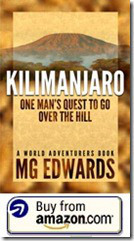 M.G. Edwards is a writer of books and stories in the mystery, thriller and science fiction-fantasy genres. He also writes travel adventures. He is author of Kilimanjaro: One Man’s Quest to Go Over the Hill, a non-fiction account of his attempt to summit Mount Kilimanjaro, Africa’s highest mountain and a collection of short stories called Real Dreams: Thirty Years of Short Stories. His books are available as an e-book and in print on Amazon.com and other booksellers. He lives in Bangkok, Thailand with his wife Jing and son Alex.
M.G. Edwards is a writer of books and stories in the mystery, thriller and science fiction-fantasy genres. He also writes travel adventures. He is author of Kilimanjaro: One Man’s Quest to Go Over the Hill, a non-fiction account of his attempt to summit Mount Kilimanjaro, Africa’s highest mountain and a collection of short stories called Real Dreams: Thirty Years of Short Stories. His books are available as an e-book and in print on Amazon.com and other booksellers. He lives in Bangkok, Thailand with his wife Jing and son Alex.
For more books or stories by M.G. Edwards, visit his web site at www.mgedwards.com or his blog, World Adventurers . Contact him at me@mgedwards.com , on Facebook , on Google+, or @m_g_edwards on Twitter.
© 2012 Brilliance Press. All rights reserved. No part of this work may be reproduced or transmitted without the written consent of the author.








June 27, 2012
Khao Yai National Park, Thailand
This is the final article about the Khao Yai area in Nakhon Ratchasima , a province in northeast Thailand. The first post featured Palio Khao Yai , an Italian-themed village, and the second Farm Chokchai, home to Thailand’s largest dairy ranch. This article showcases Khao Yai National Park .
Khao Yai National Park is Thailand’s oldest and second largest national park covering 2,168 square kilometers (1,350 square miles) in the foothills of the Dong Phaya Yen Mountains. It lies two hours by car northeast of Bangkok and is a popular getaway destination.
The Royal Thai government designated Khao Yai a national park in 1962. In 1984, the Association of Southeast Asian Nations named it an ASEAN Heritage Park, and in 2005, UNESCO listed it as a World Heritage Site under the name Dong Phaya Yen-Khao Yai Forest Complex, noting that it “contains more than 800 fauna species, including 112 species of mammals, 392 species of birds and 200 reptiles and amphibians. It is internationally important for the conservation of globally threatened and endangered mammal, bird and reptile species that are recognised as being of outstanding universal value. This includes 1 critically endangered, 4 endangered and 19 vulnerable species.”
The name “Khao Yai” originated from a small mountain township (in Thai, tambon) incorporated in 1922 and abolished a decade later when the residents were relocated to the nearby plain.
Humans and animals continued to co-exist in the area after the national park was established. In addition to small villages along the park’s feeder roads, large-scale developments, from dairy farms and wineries to hotel resorts and residential communities, have sprung up in and around Khao Yai. This has led to debates over land use, local development, conservation, environmental sustainability, and wildlife protection.
We spent a weekend in February 2012 camping near the park. It was an odd setting for a camping trip as we stayed in tents on the grounds of Cabbages & Condoms Resort (also known as “C&C” for those who avoid mentioning its full name). Camping on manicured lawns on a terraced hillside amid uniform palm trees in the shadow of a Buddhist monastery was a far cry from the wilderness camping that I enjoyed while growing up in the western United States. Nevertheless, it was an excellent introduction to camping and “roughing it” for my young son.
During our campout, we went hiking in the park and enjoyed its scenic beauty. The trail passed through subtropical forest that reminded me I was in Southeast Asia.
I couldn’t quite forget that we were staying in a resort. Tempting as it was to use the pool, I resisted the urge to soak in the chlorinated water. If I couldn’t have an authentic camping experience, at least I did my best to rough it.
Although we didn’t see any of the big game animals — elephants, tigers, or Asiatic black bears — along the way, we encountered some monkeys, lizards, geckos, and other wildlife as well as gorgeous flora.
We also saw some not-so-wild creatures such as an ornery gaggle of geese and the biggest rooster I’ve ever seen. After he crossed the road, I tried to ask him why, but he gave me a “don’t mess with me” look. I left him alone.
Signs of humans were evident throughout Khao Yai. Small farms lined the road all the way to the park’s doorstep. Unlike the large developments built in recent years, those who had lived in the area for decades seemed to have found a way to inhabit it without leaving an intrusive footprint, as evidenced by the “school bus” truck taking students home after school.
On the last day of our camping trip, we drove through the rest of the park. Along the way we passed by villages, vineyards, homesteads, and gated communities. One moment we saw villas that reminded me of Tuscany and the next, a Buddhist temple. It was an odd mix of development that left me amused and bewildered. I wondered whether the park would survive in the long term with this kind of encroaching sprawl.
I think the area will ultimately find the right balance. Thailand has found a way to flourish organically, and Khao Yai is a heterogeneous microcosm of all there is to love about this wonderfully diverse place.
If you’re looking for a fun daytrip out of Bangkok that will give you a taste of the eclectic side of Thailand, Khao Yai is a great choice.
More About the Khao Yai Area of Thailand:
Palio Khao Yai , an Italian-themed shopping center near Khao Yai National Park.
Farm Chokchai , Thailand’s largest dairy farm with theme park-style attractions and entertainment reminiscent of the American Frontier.
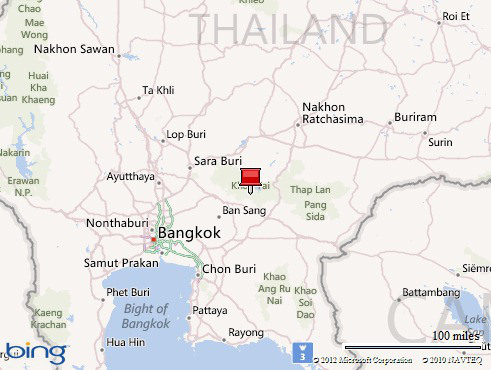
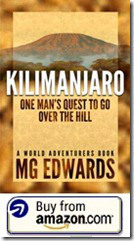 M.G. Edwards is a writer of books and stories in the mystery, thriller and science fiction-fantasy genres. He also writes travel adventures. He is author of Kilimanjaro: One Man’s Quest to Go Over the Hill, a non-fiction account of his attempt to summit Mount Kilimanjaro, Africa’s highest mountain and a collection of short stories called Real Dreams: Thirty Years of Short Stories. His books are available as an e-book and in print on Amazon.com and other booksellers. He lives in Bangkok, Thailand with his wife Jing and son Alex.
M.G. Edwards is a writer of books and stories in the mystery, thriller and science fiction-fantasy genres. He also writes travel adventures. He is author of Kilimanjaro: One Man’s Quest to Go Over the Hill, a non-fiction account of his attempt to summit Mount Kilimanjaro, Africa’s highest mountain and a collection of short stories called Real Dreams: Thirty Years of Short Stories. His books are available as an e-book and in print on Amazon.com and other booksellers. He lives in Bangkok, Thailand with his wife Jing and son Alex.
For more books or stories by M.G. Edwards, visit his web site at www.mgedwards.com or his blog, World Adventurers . Contact him at me@mgedwards.com , on Facebook , on Google+, or @m_g_edwards on Twitter.
© 2012 Brilliance Press. All rights reserved. No part of this work may be reproduced or transmitted without the written consent of the author.








June 24, 2012
Farm Chokchai – The Old West in Thailand
This is the second of three articles about the Khao Yai area in Nakhon Ratchasima , a province in northeast Thailand . The first article focused on Palio Khao Yai , an Italian-themed village, and the next will feature Khao Yai National Park . This post is about Farm Chokchai , home to Thailand’s largest dairy ranch.
With more than 5,000 head of cattle ranging over 8,000 acres, Farm Chokchai is Thailand’s largest dairy farm and one of the largest in Asia. Established in 1957 by Thai cowboy Khun Chokchai Bulakul on 100 acres, the farm has grown during its 55 year history. It has had a colorful history experimenting with different businesses ranging from selling machinery and construction materials, raising beef cattle and exporting beef, operating steakhouses, and selling dairy products. Its current iteration is as a dairy farm. Farm Chokchai went through some setbacks during the mid-1990s Asian financial crisis but bounced back in the next decade. It is now one of Thailand’s major dairy brands with a variety of milk products, including its Umm…Milk line.
Farm Chokchai is a tourist attraction for those who want to see how a dairy farm and ranch operates. A two-hour drive from Bangkok, it gives those who have limited knowledge of western-style farms the opportunity to get away from the city and “experience” a farm with a “Wild West” flavor emphasized by its owners, the Farm Chokchai Group. The wood false-front stores reminiscent of the American West, souvenir shops with assortments of dairy products and plush farm animal toys, and carnival games give the place a theme park atmosphere. The farm offers a daily tour geared to children as well as “Farm Chokchai Camp,” a facility where visitors can stay overnight and enjoy the countryside. It seems to tap into the same nostalgia for rural life as the online game app FarmVille.
My son and I toured Farm Chokchai in May 2012. We watched a movie about the farm’s history, then joined a Thai-speaking guide who showed us equipment once used around the farm, including a John Deere tractor that is reportedly one of just two still in existence — the other sits in the company’s headquarters in Moline, Illinois. We then entered a showroom where the farm processes some of its milk products such as yogurt and ice cream. Conspicuously absent was cheese, a food that few Thais eat. The showroom demonstrated how the farm turns milk into dairy products but did not operate as a full-fledge processing plant.
We proceeded to another building where a man demonstrated how bulls are “milked” for sperm to sell to other farms. I was glad that he didn’t show the group of kids on the tour how it’s used!
After our biology lesson, we tooled around the farm in a wagon pulled by a tractor. I enjoyed the beautiful views of the Thai countryside surrounding the dairy farm. The scenery reminded me of places I’ve seen in the United States, especially Northern California and the Mid-Atlantic coastal region.
We stopped at a corral surrounded by a ring of frontier-style buildings to watch Thai cowboys demonstrate skills once needed to survive in the Wild West. The crowd watched in awe as a cowboy astride a horse rounded up a calf and took it down with a lasso. A woman showed the audience how to twirl two pistols simultaneously, and a man showed off some fancy rope work by twirling his lasso in the air. For many spectators, this would be the closest they would get to a seeing a rodeo.
The wagon brought us to an area with a stage where animals wowed the crowd with their talents. A macaw rode a miniature bicycle; another solved math problems. A goat rode a barrel. A dog bottle fed a calf while other dogs (literally) jumped through hoops. PETA wouldn’t have approved, but then again, Farm Chokchai is a large-scale commercial enterprise that puts animals to use in many other ways.
We finished our tour at a petting zoo where visitors, children and parents alike, fed the cows, goats, and Eld’s deer fawns. My son enjoyed feeding the fawns. I almost had to rescue him from the herd as they pressed in on him eager for food.
Like the nearby Italian-themed Palio Khao Yai, Farm Chokchai is a place in Thailand with an atmosphere that can make you forget you’re there. The farm did a good job of presenting the Old West and western-style farming to local audiences in an entertaining package that’s attractive to kids. I don’t recommend the tour as a daytrip for tourists visiting Thailand for the first time, but if you’re planning to stay a while, it might be a good diversion from the hustle and bustle of urban Bangkok.
Even in Farm Chokchai, you won’t be able to get away completely from reminders you’re in Asia. You’ll still see dragon fruit (pitaya) trees and spirit houses that give a distinctly Thai flavor.

More About the Khao Yai Area of Thailand:
Palio Khao Yai, an Italian-themed shopping center a few kilometers from Farm Chokchai
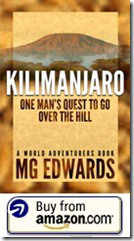 M.G. Edwards is a writer of books and stories in the mystery, thriller and science fiction-fantasy genres. He also writes travel adventures. He is author of Kilimanjaro: One Man’s Quest to Go Over the Hill, a non-fiction account of his attempt to summit Mount Kilimanjaro, Africa’s highest mountain and a collection of short stories called Real Dreams: Thirty Years of Short Stories. His books are available as an e-book and in print on Amazon.com and other booksellers. He lives in Bangkok, Thailand with his wife Jing and son Alex.
M.G. Edwards is a writer of books and stories in the mystery, thriller and science fiction-fantasy genres. He also writes travel adventures. He is author of Kilimanjaro: One Man’s Quest to Go Over the Hill, a non-fiction account of his attempt to summit Mount Kilimanjaro, Africa’s highest mountain and a collection of short stories called Real Dreams: Thirty Years of Short Stories. His books are available as an e-book and in print on Amazon.com and other booksellers. He lives in Bangkok, Thailand with his wife Jing and son Alex.
For more books or stories by M.G. Edwards, visit his web site at www.mgedwards.com or his blog, World Adventurers . Contact him at me@mgedwards.com , on Facebook , on Google , or @m_g_edwards on Twitter.
© 2012 Brilliance Press. All rights reserved. No part of this work may be reproduced or transmitted without the written consent of the author.








June 21, 2012
Thank You Oklahoma
Oklahoma, Oklahoma City , and the Oklahoma City Thunder
Thank you for being the catalyst to build a new Arena in Seattle and bring an NBA and NHL team to town by making it to this year’s NBA Finals. Thanks to your efforts, you have once again energized Seattle fans everywhere. See you soon back in Seattle to play the SuperSonics.
Better Luck Next Year.
Seattle SuperSonics logo courtesy of Sportslogos.net








June 18, 2012
Palio Khao Yai, the Italy of Thailand
Palio Khao Yai is an Italian-themed shopping center in the heart of Thailand’s wine country. Located near Khao Yai National Park two hours northeast of Bangkok, Palio is an Italian-style enclave that’s light years from Thailand. It is nestled amid vineyards, dairy farms — yes, dairy farms — upscale housing developments, organic Thai villages, hotel resorts, and a smattering of Buddhist temples. The area is one of the more eclectic I’ve seen.
The “Italian village” features more than 100 stores and restaurants on pedestrian streets and alleyways that radiate like wheel spokes from the center, Piazza Palio. The developers went out of their way to recreate the feeling of wandering through a small town in Tuscany, complete with a clock tower, baroque-style buildings covered in ivy, a manicured garden, and a replica of the famous Bocca della Verità (“Mouth of Truth”) carving in Rome.
It would be easy to forget that you’re in Thailand as you walk through Palio were it not for the “newness” of the place, the diverse, mostly Asian, crowds, and the kitschy souvenirs and attractions that you would be hard-pressed to find in rural Italy — like toilet paper dispensers shaped like bums and clowns making balloon art.
Palio is a place that bears little resemblance to Thailand. Nevertheless, the hot, subtropical weather that drives you to have a cool drink at one of the sidewalk cafés is a reminder that you’re nowhere near the Mediterranean.
Palio, which opened in early 2010, is reportedly co-owned by two local investors, Juladis and Primo Posto. Juladis also owns the Juladis Khao Yai Resort near Palio. Primo Posto is another, smaller Italian style restaurant, café, and shop closer to Khao Yai National Park.
Palio’s Italian theme blends in with the many faux European housing developments and resorts that have sprung up in the Khao Yai area. PB Valley, Thailand’s largest winery, and other vintners add to the Tuscan ambiance with vineyards that grow shiraz, tempranillo, chenin blanc and columbard grape varietals capable of producing quality wines in the subtropics. The area has become a draw for retirees or those who want to get away — but not too far — from Bangkok. Palio is not only a tourist attraction but a place where transplants can conveniently enjoy a good meal or shop.
Palio is a novelty for foreigners and Thais alike. While it could never take the place of a visit to an authentic Italian village, it’s an easy getaway from Thailand in the middle of Thailand.
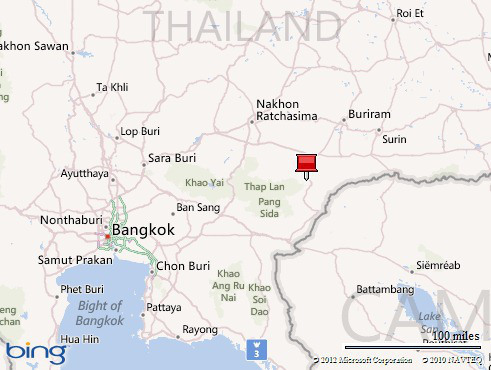
 M.G. Edwards is a writer of books and stories in the mystery, thriller and science fiction-fantasy genres. He also writes travel adventures. He is author of Kilimanjaro: One Man’s Quest to Go Over the Hill, a non-fiction account of his attempt to summit Mount Kilimanjaro, Africa’s highest mountain and a collection of short stories called Real Dreams: Thirty Years of Short Stories. His books are available as an e-book and in print on Amazon.com and other booksellers. He lives in Bangkok, Thailand with his wife Jing and son Alex.
M.G. Edwards is a writer of books and stories in the mystery, thriller and science fiction-fantasy genres. He also writes travel adventures. He is author of Kilimanjaro: One Man’s Quest to Go Over the Hill, a non-fiction account of his attempt to summit Mount Kilimanjaro, Africa’s highest mountain and a collection of short stories called Real Dreams: Thirty Years of Short Stories. His books are available as an e-book and in print on Amazon.com and other booksellers. He lives in Bangkok, Thailand with his wife Jing and son Alex.
For more books or stories by M.G. Edwards, visit his web site at www.mgedwards.com or his blog, World Adventurers . Contact him at me@mgedwards.com , on Facebook , on Google+, or @m_g_edwards on Twitter.
© 2012 Brilliance Press. All rights reserved. No part of this work may be reproduced or transmitted without the written consent of the author.








June 15, 2012
World Adventurers — GoAbroad’s Blog of the Week
 Thank you, GoAbroad, for featuring World Adventurers as your Blog of the Week! It’s an honor to be recognized by a leading international education and experiential travel resource.
Thank you, GoAbroad, for featuring World Adventurers as your Blog of the Week! It’s an honor to be recognized by a leading international education and experiential travel resource.
Thanks to everyone stopping by to visit my blog. You’re most welcome. There are many posts on travel and other topics for your reading enjoyment listed in the Category Cloud and Top Ten List below. Enjoy browsing!
GoAbroad writes in its Blog of the Week feature:
World Adventurers
The official blog of published author, Michael (M.G.) Edwards, World Adventurers was started in 2004 when Michael moved abroad with his family to serve as a diplomat in U.S. missions overseas. With more than 850 posts, 300,000 hits, and features on WordPress’ "Freshly Pressed," World Adventurers is a dynamic travel blog with a large following. The content on World Adventurers lends itself to those interested in adventure travel, with resources that range from Michael’s own travel tips to lists of top things to see and do in a variety of countries.
Why We Love It
Michael’s background and degrees in international studies, political science, history, German, and a master’s degree in China Studies makes it more than apparent that World Adventurers is written by an author with extensive international experience. This is supplemented all the more by Michael’s past career as a diplomat with the U.S. Department of State, which included assignments such as: working as a consular officer at the U.S. Embassy in Seoul, Korea, and as a political officer at the U.S. Embassy in Asunción, Paraguay , where he focused on political-military affairs and human rights.
What makes World Adventurers unique is the way every post tells a story. The latest blog post, for example – Top Ten Things to Savor in Macau – is depicted with photos and a travelogue, keeping readers interested as well as informed. The photos are rich in detail and give a deeper glimpse into the experiences shared on World Adventurers.
 Be sure to check out the blog for more updates on World Adventurers, and
explore GoAbroad.com for thousands of adventure travel opportunities!
Be sure to check out the blog for more updates on World Adventurers, and
explore GoAbroad.com for thousands of adventure travel opportunities!
Thank you very much, GoAbroad!








June 12, 2012
Top Ten Things to Savor in Macau
Here is a top ten list of things to enjoy in Macau, a Special Administrative Region of the People’s Republic of China and former Portuguese colony. This list is based on my visit to Macau in April 2012. The activities and destinations listed should give you a taste of what one of Asia’s most fascinating places has to offer.
1. Ruins of St. Paul Cathedral in the Historic Centre of Macao (the Portuguese spelling of Macau), a UNESCO World Heritage Site.
The Historic Centre of Macao on Macau Peninsula with its mix of Portuguese and Chinese influences was designated a World Heritage Site by UNESCO in 2005. The Centre stretches over several square kilometers in two zones: one between Barra Hill to the west and Mount Hill in the center, and the other to the east encompassing the Guia Fortress, Guia Chapel, and Guia Lighthouse. The first zone boasts 20 monuments of special significance to the blending of eastern and western influences that harken back to Macau’s days as a Portuguese colony. Click here for more information about the Centre.
The Ruins of St. Paul’s Cathedral and College is arguably the city’s most famous landmark and a must-see attraction. Completed in 1602 by the Jesuits, it was one of the largest Catholic complexes in Asia but fell into decline after Pope Clement XIV dissolved the Jesuits’ Order, the Society of Jesus, in 1773, and the Jesuits departed. It was destroyed by a fire during a typhoon in 1835. The cathedral’s façade crowning a long flight of stone steps is the only visible remnant of the church. Its baroque features are reminiscent of the Jesuit Reductions in South America that were built at about the same time. Behind the façade of St. Paul’s is the Museum of Sacred Art and Crypt with relics and artifacts from the former Jesuit complex.
Next to the Ruins of St. Paul’s is the nondescript Na Tcha Temple, a Buddhist and Taoist temple built in 1888 to honor the Taoist deity of protection, Na Tcha. Perhaps just as significant is the red-brown wall behind the temple that is reportedly one of the last standing sections of the Old Wall of Macau destroyed by the Chinese in 1622.
2. Senado Square and Leal Senado:
As short walk from the Ruins of St. Paul’s through the colorful shopping district of the Historic Centre of Macao is Senado Square, or Senate Square. This is the heart of historic Macau. The square is paved with a colorful mosaic of cobblestones surrounding a contemporary fountain bedecked with a metallic globe. St. Dominic’s Church, Leal Senado, General Post Office, Santa Casa de Misercordia (Holy House of Mercy), a Portuguese charity, and other colonial buildings border the square.
The shopping district in the Historic Centre of Macao:
3. Mount Fortress and the Macau Museum
Also located in the Historic Centre of Macao, the Mount Fortress (Fortaleza do Monte in Portuguese) is a hilltop fortress built in 1626 by the Jesuits to defend themselves from attack. The colonial government seized it after the Jesuits left Macau in the 1770s. It served for many years as the residence of the governors of Macau and a military fort.
The Museum of Macau sits on top of the mount.
Mount Fortress is a short escalator ride from the Ruins of St. Paul’s and has a nice vista overlooking the city worth the trip. You can almost hear echoes of the city’s colonial past near the cannons on the ramparts. The beautiful garden offers panoramic views of the old city. Click here for more views of the city’s skyline.
If you enjoy old military forts and have the time, visit Guia Fortress a few kilometers to the east.
4. A-Ma Temple
The A-Ma Temple, a Taoist temple built in 1488, is the oldest and most famous in Macau. It’s located at the base of Barra Hill at the western end of the Historic Centre of Macao. Time and weather did not permit us to visit it on our trip, but several sources have indicated that it is one of Macau’s main attractions and worth a visit.
5. Visit the casinos, gamble and shop
As the only place in the People’s Republic of China where gambling is permitted, Macao is a popular destination for Chinese who enjoy gambling. As of 2012, gambling revenue in Macau was five times that of Las Vegas, although you wouldn’t know at first glance. Unlike the crowded Las Vegas Strip, Macau’s casinos are scattered across the city. The newer casinos are located on the Cotai Strip in Cotai, a district between Taipa and Coloane islands built on reclaimed land. The Galaxy, City of Dreams, and Venetian are on the Cotai Strip. Others, including the Grand Lisboa and the Sands, are located near the Historic Centre of Macao. These casinos and hotels are filled with restaurants, shops, and entertainment venues that appeal to gamblers and tourists alike. We stayed at the Galaxy and were impressed by the amenities and beautiful peacock motif.
6. Dine on Macanese and Portuguese cuisine
Macau offers a delicious fusion of Chinese and Portuguese cooking. The two have blended into a local style known as Macanese cuisine with an emphasis on baked goods and grilled and roasted meats. Some popular Macanese dishes are Portuguese or African chicken, codfish (bacalhau), gray chicken or rabbit (pato de cabidela), spicy chili shrimps, minced beef or pork (minchi), stir-fried curry crab, steamed pork buns, and egg tarts. Macau has many fine Macanese, Portuguese, and Chinese restaurants. Dine at one recommended by a local or the concierge at your hotel. We dined at Antonio (259 rua dos Negociantes Taipa), a Michelin 3-star Portuguese restaurant owned by renowned chef Antonio Coelho widely known as one of the best purveyors of Portuguese cuisine in Macau. The meal was delicious, and the ambiance was wonderful.
Other recommended restaurants in Macau are Fernando’s on Coloane island (9 Praiade Hac), seafood restaurant O Manel (10 rua de Femao Mendes Pinto), and Macanese restaurant O Porto Interior (259 rua do Almirante Sergio).
7. Macau Tower:
The 338 meter (1,109 foot) tall Macau Tower offers some of the best views of Macau. Thrill seekers can walk on Skywalk X, the outer rim of the tower with only a tether and no handrail. Or bungee jump off the tower, the second highest in the world after the Vegas’ Stratosphere skyjump. We didn’t visit the tower because of bad weather, but I took a photo of it.
8. Taipa Village:
Taipa Village is an old settlement on Taipa Island near the Cotai Strip. It’s worth a visit if you’re staying on Taipa or Coloane islands. Get away for a meal at one of the Portuguese or Macanese restaurants. Walk along Rua do Cunha or one of the cobblestone side streets to buy pastries or souvenirs and visit the Taipa House Museum and Church of Our Lady of Carmel. With all the modern casinos rising up around it, this colonial-era town feels like a place frozen in time.
Here are a couple of odd sights we encountered in Taipa Village – alley cats feasting on a meal outside a restaurant (we didn’t eat there) and dried caterpillar fungus (Cordyceps sinensis) for Chinese herbal tea.
9. Macau Science Center, Cultural Center of Macau, and Macau Museum of Art:
The Macau Science Centre is a contemporary waterfront structure designed by famous architect IM Pei that opened in 2009. The Cultural Center of Macau and Museum of Art are co-located in the same building across the street from the science center. The three offer a variety of exhibits and performances that make for a nice alternative to the casinos and historic parts of town. They are also visually attractive and offer a nice photo op.
10. The House of Dancing Water Show:
The House of Dancing Water, a Vegas-style stage production at the City of Dreams, is a wonderfully choreographed experience in an intimate aqua theater-in-the-round. The uniquely Asian take on the aquatic theater concept combines theater, dance, gymnastic artistry, high-performance diving, and state-of-the-art displays of water imagery. Click here to read my previous post about the show.
We simply enjoyed walking around the streets of Macau to see the city. Here are some photos from the city center:
There are many more things to savor in Macau. It’s impossible to see it all without visiting at least a few days. From the Macau Grand Prix held each November to taking the one hour Hong Kong-Macau Ferry, a visit to Macau is filled with eclectic diversions that make it a fun destination in Asia.
Here’s to hoping your trip will be filled with sunshine.
More About Macau
Visit these links for other blog posts about Macau:
Click here for more information about the Historic Centre of Macau.
Click here for more information about the House of Dancing Water.
Click here for a video clip of the city’s skyline.
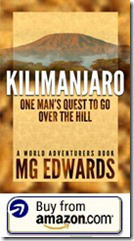 M.G. Edwards
is a writer of books and stories in the mystery, thriller and science fiction-fantasy genres. He also writes travel adventures. He is author of
Kilimanjaro: One Man’s Quest to Go Over the Hill
, a non-fiction account of his attempt to summit Mount Kilimanjaro, Africa’s highest mountain. His collection of short stories called
Real Dreams: Thirty Years of Short Stories
available as an e-book and in print on
Amazon.com
. He lives in Bangkok, Thailand with his wife Jing and son Alex.
M.G. Edwards
is a writer of books and stories in the mystery, thriller and science fiction-fantasy genres. He also writes travel adventures. He is author of
Kilimanjaro: One Man’s Quest to Go Over the Hill
, a non-fiction account of his attempt to summit Mount Kilimanjaro, Africa’s highest mountain. His collection of short stories called
Real Dreams: Thirty Years of Short Stories
available as an e-book and in print on
Amazon.com
. He lives in Bangkok, Thailand with his wife Jing and son Alex.
For more books or stories by M.G. Edwards, visit his web site at www.mgedwards.com or his blog, World Adventurers . Contact him at me@mgedwards.com , on Facebook , on Google+, or @m_g_edwards on Twitter.
© 2012 Brilliance Press. All rights reserved. No part of this work may be reproduced or transmitted without the written consent of the author.









